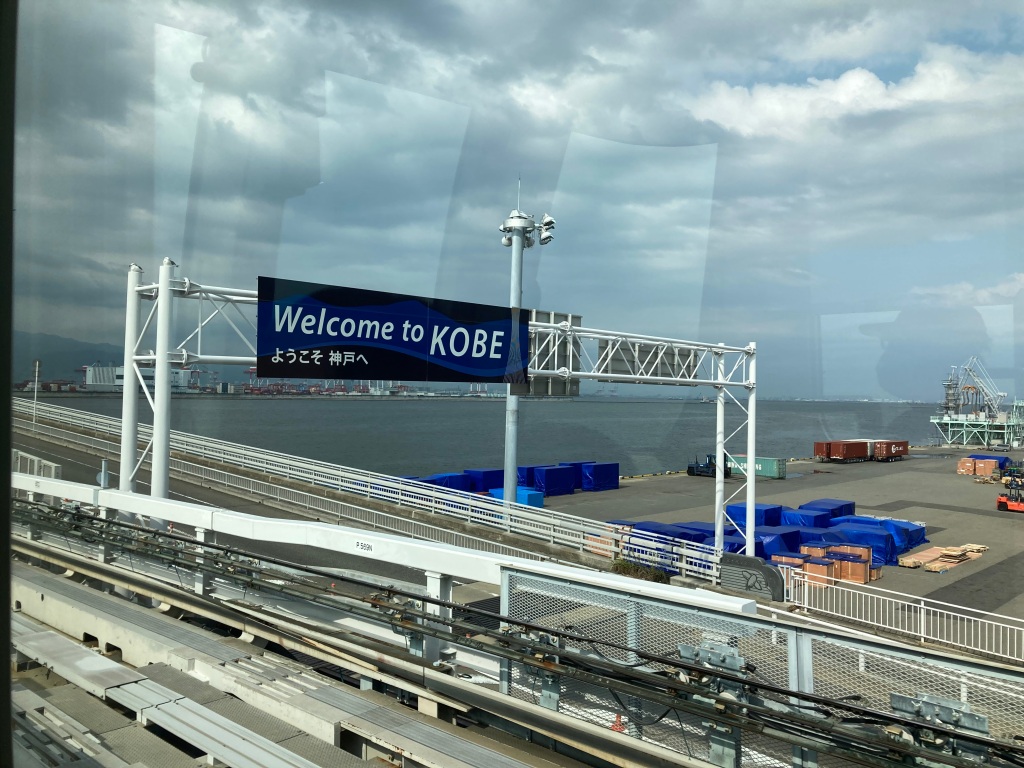I took a week-long trip to Aomori Prefecture, the northernmost part of Japan’s main island, Honshu. I drove around from Sunday to Friday, and then spent the weekend in Hakodate, in the southern part of Hokkaido.

Day 1: Kobe > Aomori > Goshogawara
There’s a direct flight from Kobe to Aomori (1.5 hours), on Fuji Dream Airlines, a relatively new low-cost operator. I landed in Aomori around lunchtime.

I picked up my rental car at Aomori Airport and headed west towards the coast of the Sea of Japan. My first destination was Takayama Inari Shrine, a Shinto shrine dedicated to the fox god(s) of fertility, rice, industry, etc. There are tons of Inari shrines around Japan, distinctive for their red torii (gates) and fox statues. This shrine is famous for its long, winding line of torii that lead to an observation deck. A few years ago I visited a similar (and more impressive) Inari shrine: Motonotsumi Inari in Yamaguchi prefecture. Takayama Inari is probably much more impressive in winter, when it is entirely covered in snow.
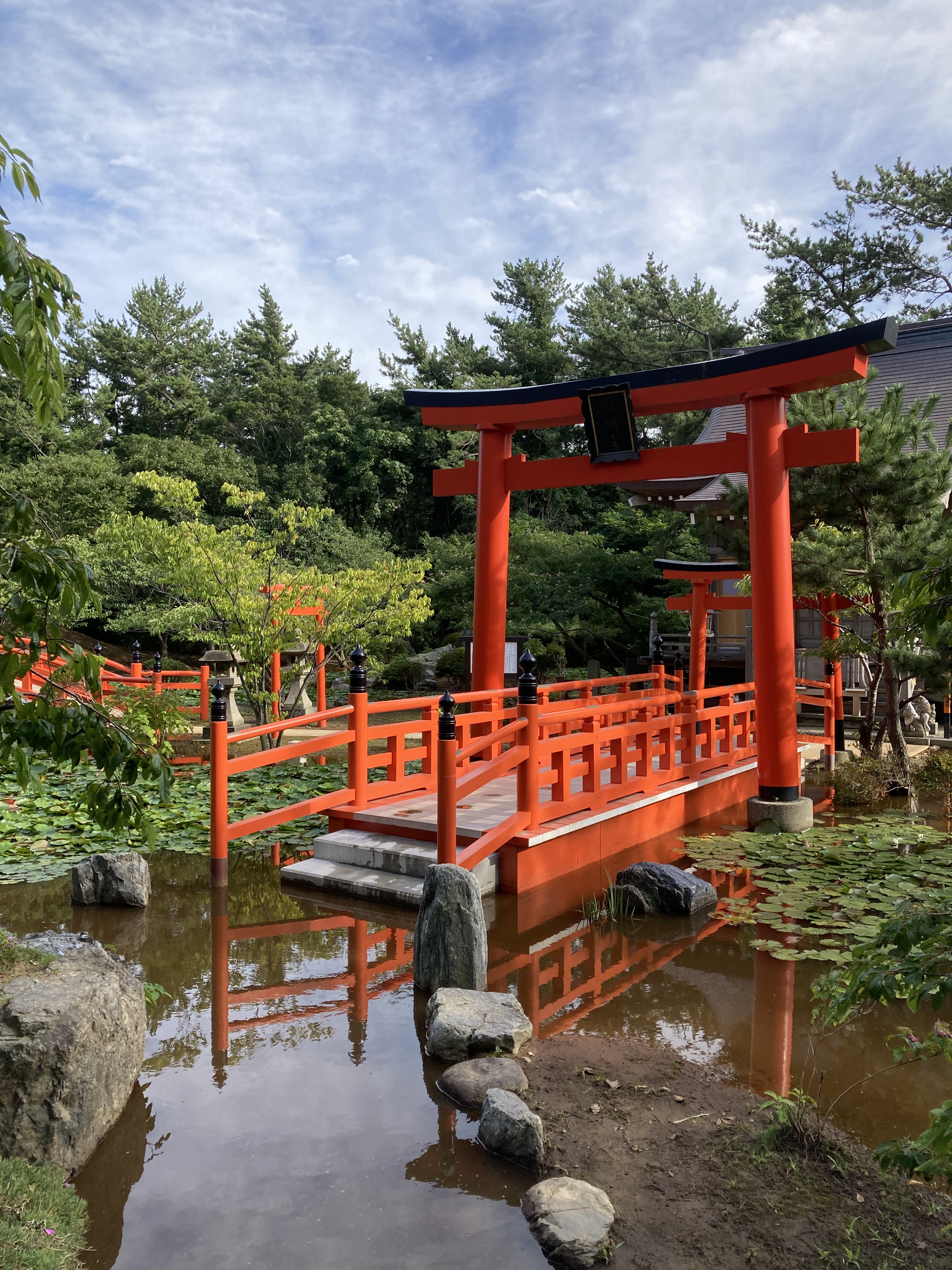
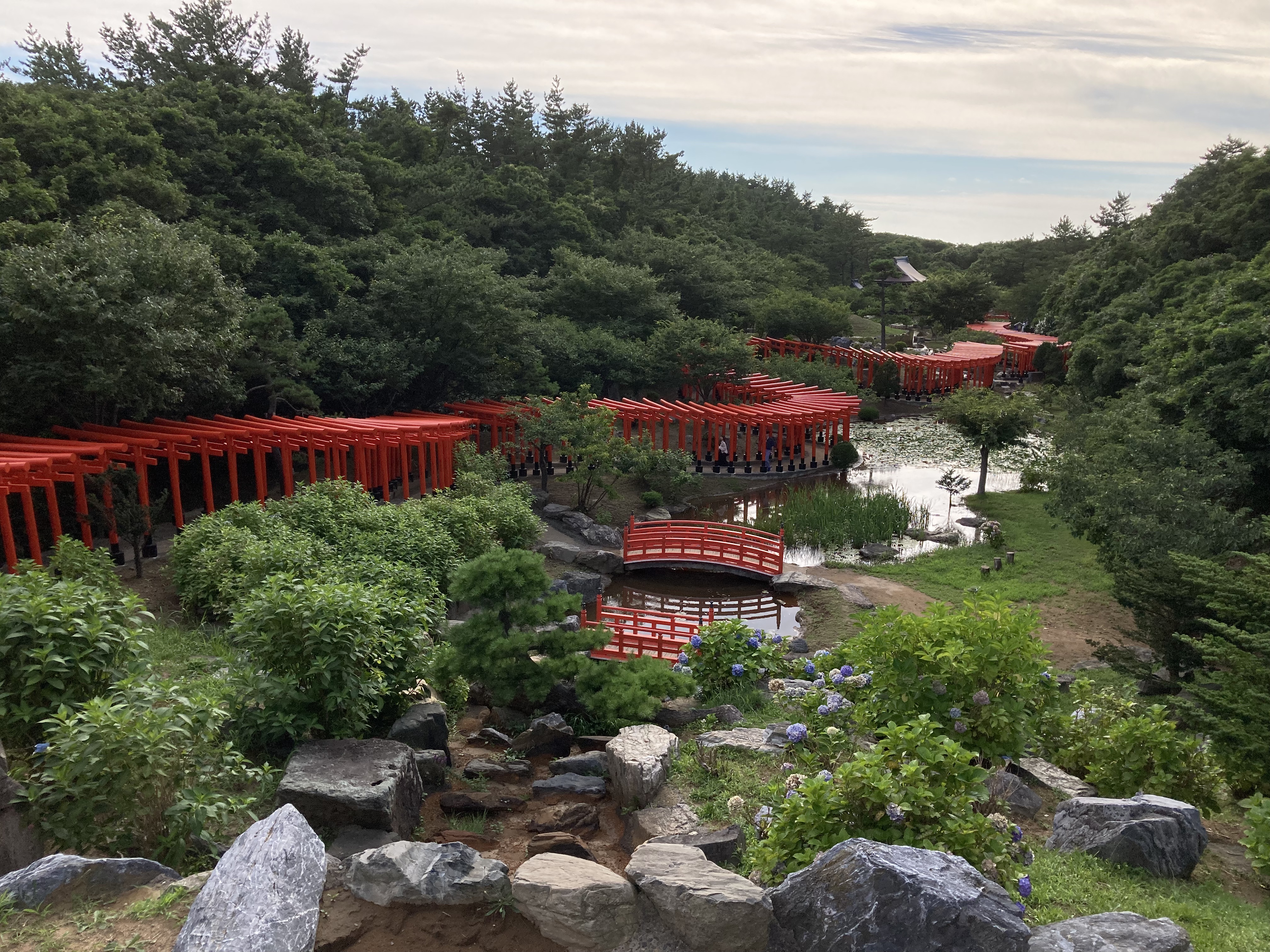
From there I drove to Tsuro-no-Maihashi bridge, over Fujimiko lake, the “longest triple-arched wooden bridge” in Japan (they love categorizing stuff here, so there’s a lot of “no. 1” things to see). The sun was setting as I parked the car and headed for the bridge, and that provided for a beautiful dusk view of the bridge and its surroundings. The bridge is about 300m long and was constructed in the 1990s. Its name is derived from the many cranes (tsuro) that inhabit the area (literally, “bridge of the dance of the cranes”).

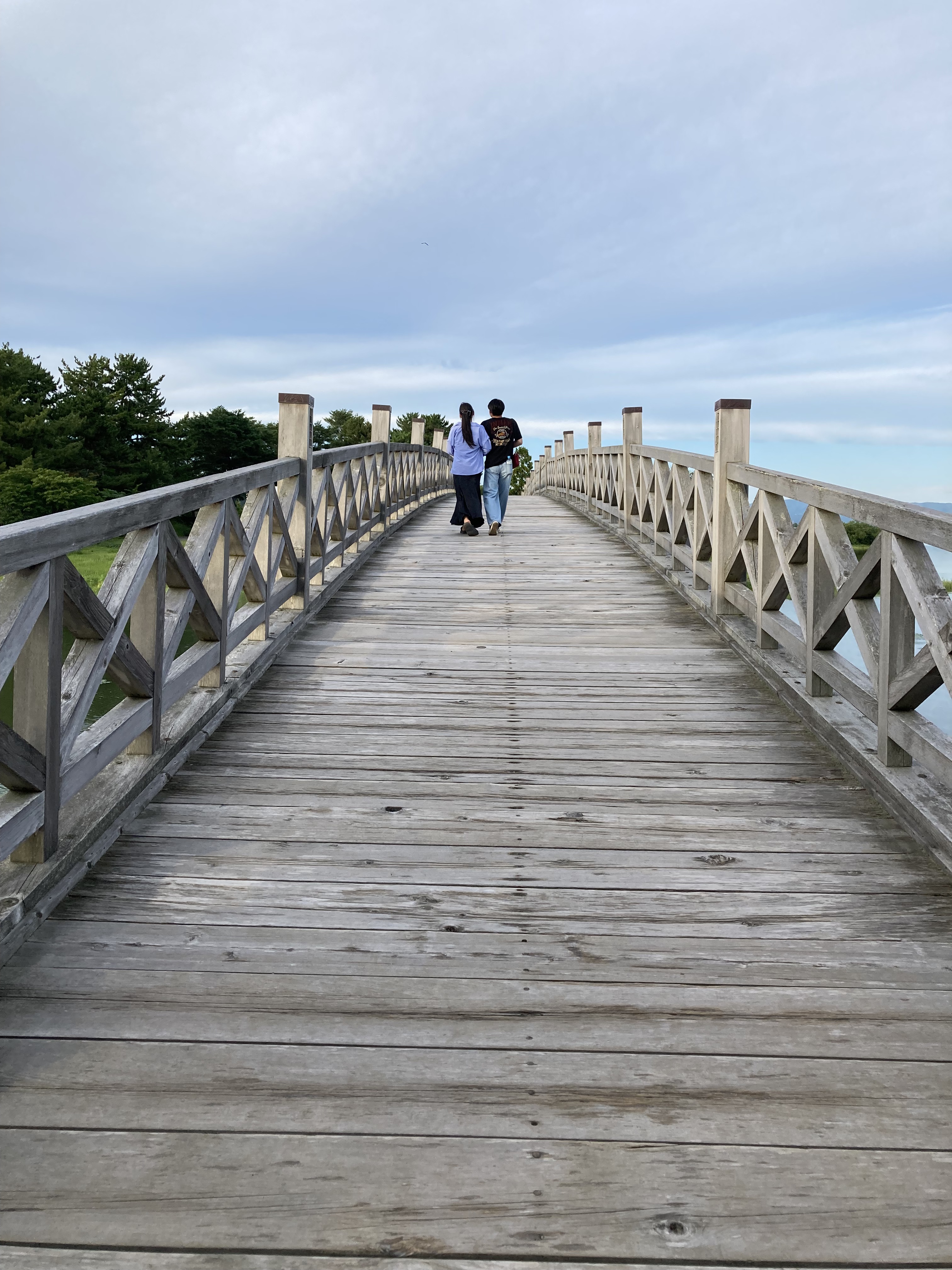
I spent the first night in Goshogawara, a sleepy town (pop. 54,000) – which was particularly sleepy on this hot Sunday evening – wrapping the day off with a soak in the hotel’s onsen.
Day 2: Goshogawara > Fukaura > Towadako
The plan was to spend most of today hiking in the Shirakami Sanchi area, specifically to see the falls at Anmon. But the weather forecast was for heavy rain to start in early afternoon, so the plan changed.
I started off with a visit to Iwakiyama Shrine, so named as it stands at the base of Mount Iwaki. The mountain has been considered sacred from time immemorial, and several shrines were built on and around it for centuries. This shrine was erected more than 1,000 years ago as a Buddhist shrine, but during the Meiji period it became a Shinto shrine, testimony to the flexibility and syncretism of religious belief in Japan.
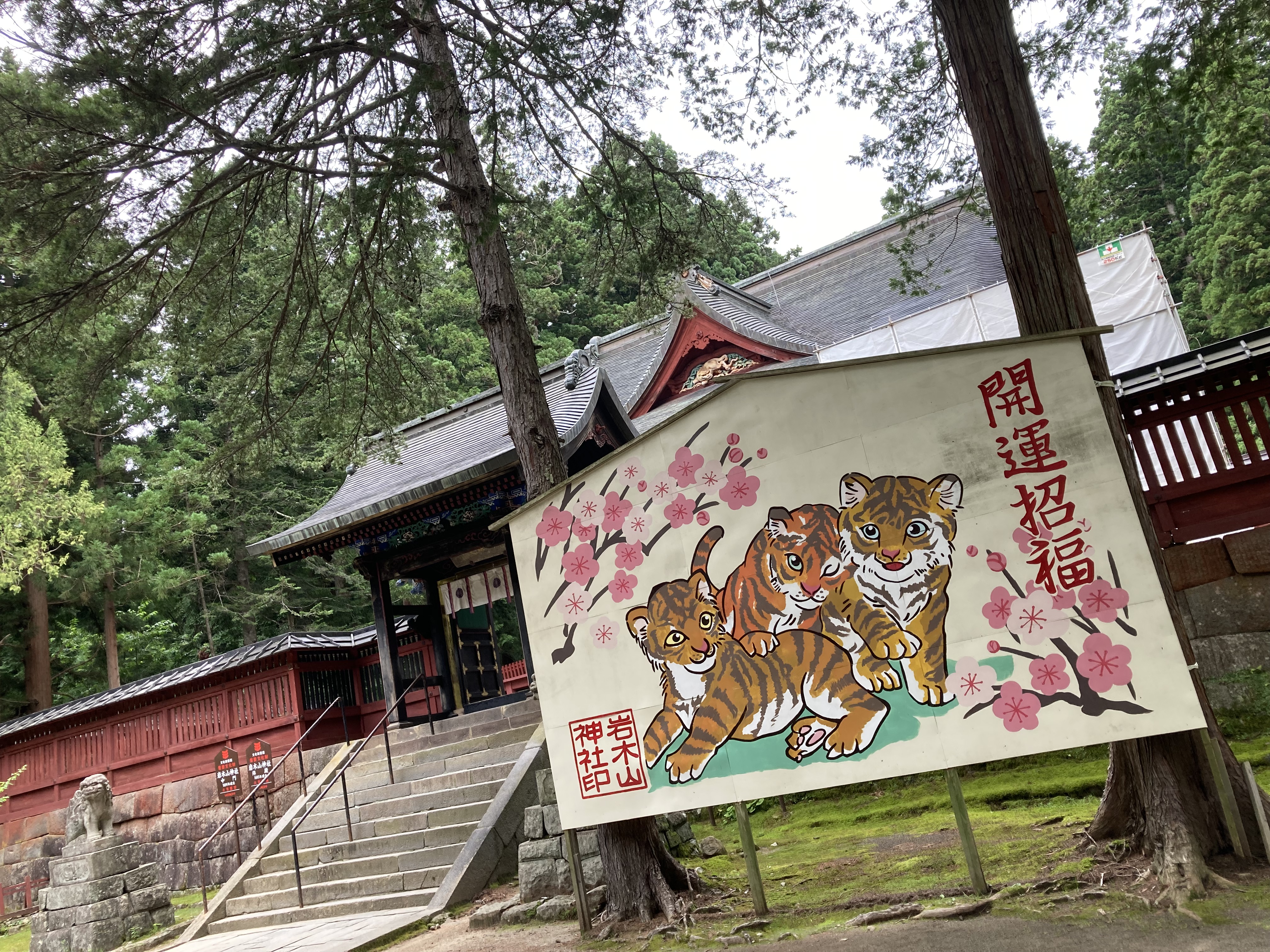
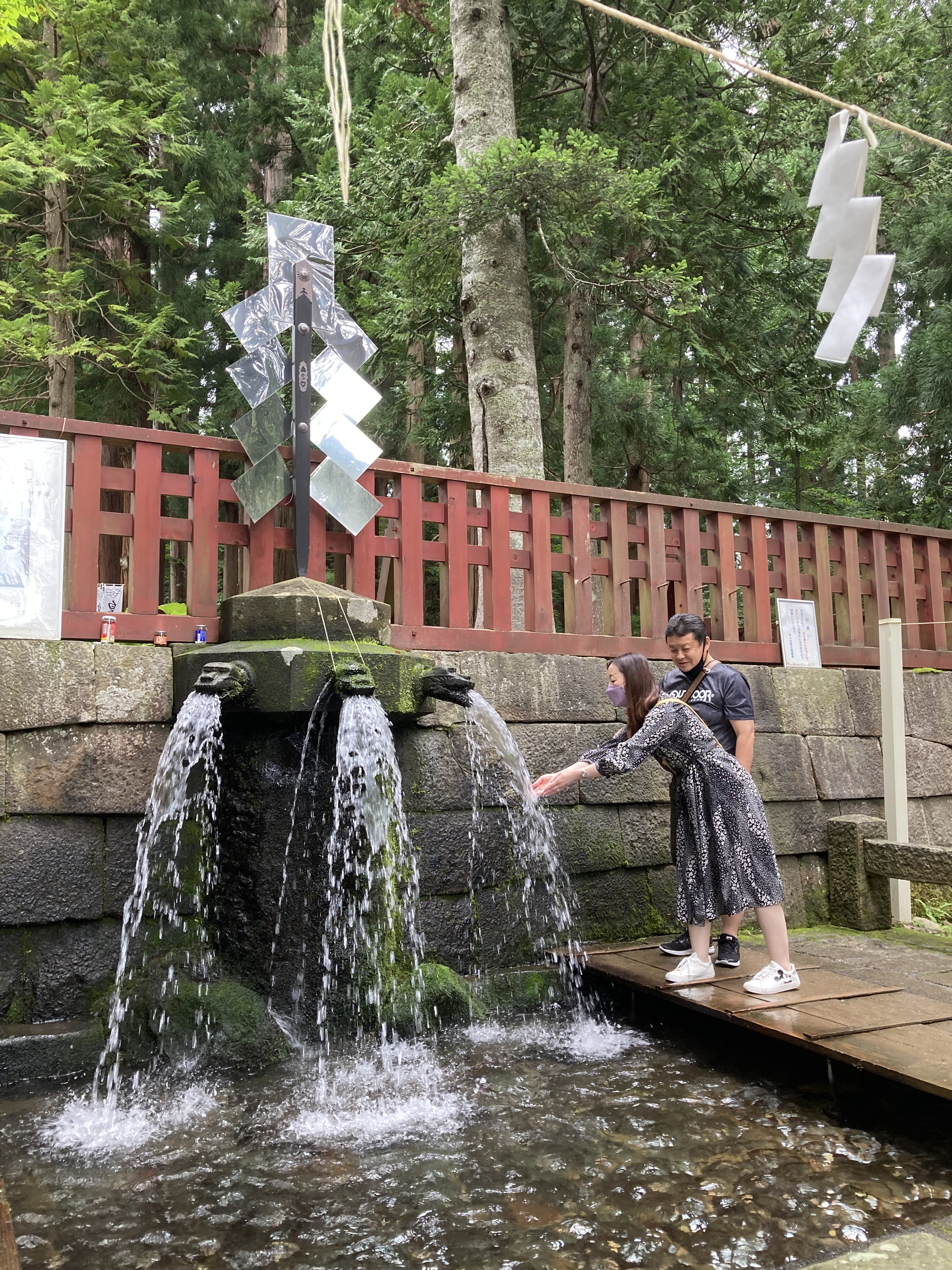
From Iwakiyama I headed West to the coast, specifically to Senjojiki Coast, based on a friend’s recommendation. This is a bedrock beach which was formed as a result of the earth moving up during an earthquake in 1792. I walked out into the sea, precariously balancing myself on these rock formations. There were lots of seagulls around, and they seemed quite used to the presence of humans.
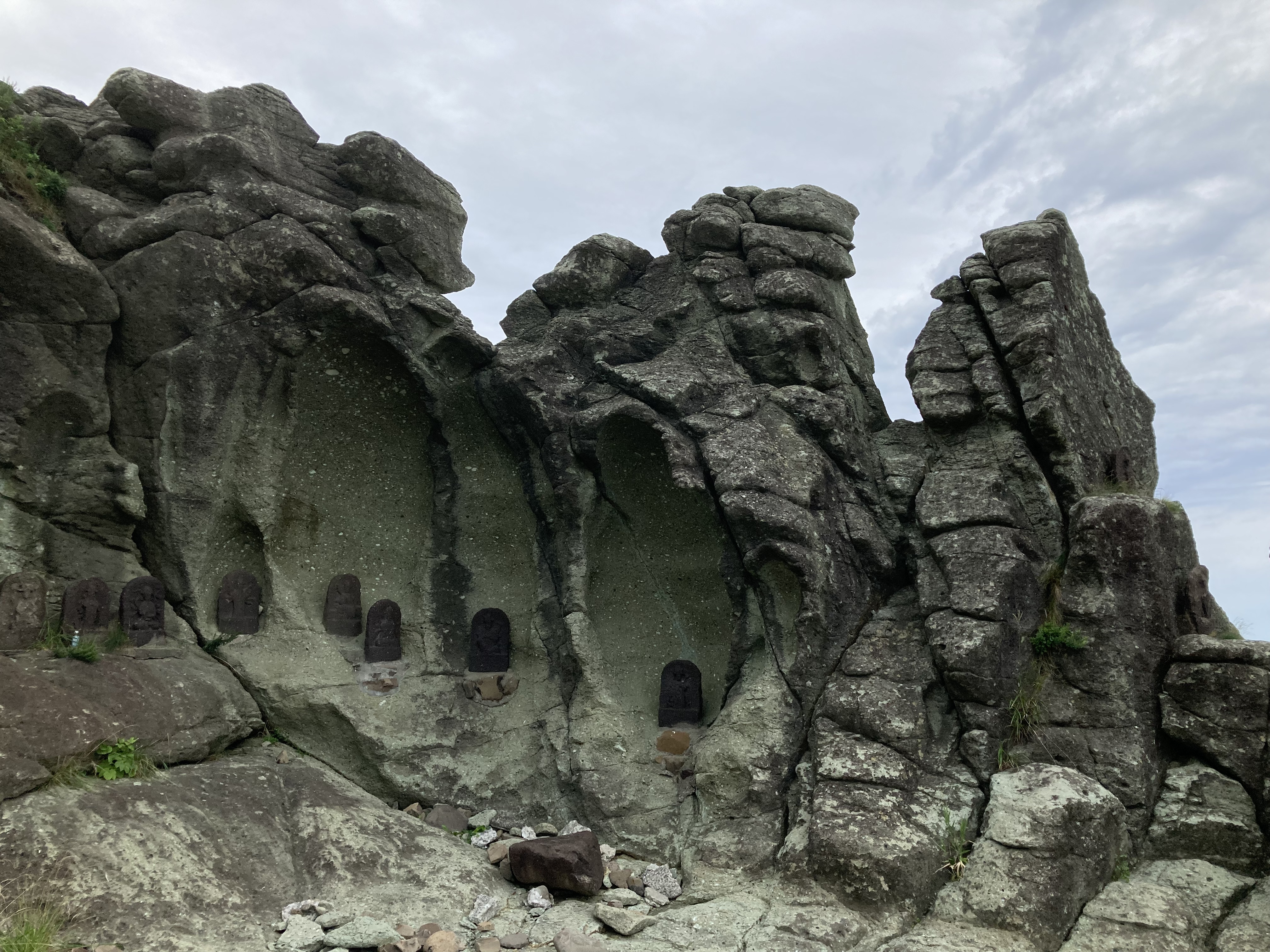

I then travelled south along the coast, and stopped at Oiwa cave, near Fukaura. This is a tiny isle connected to the shore with a walkway. The “cave” is basically a few meters of stairs carved into the rock and leading up to the top of the isle. It offers a nice view.
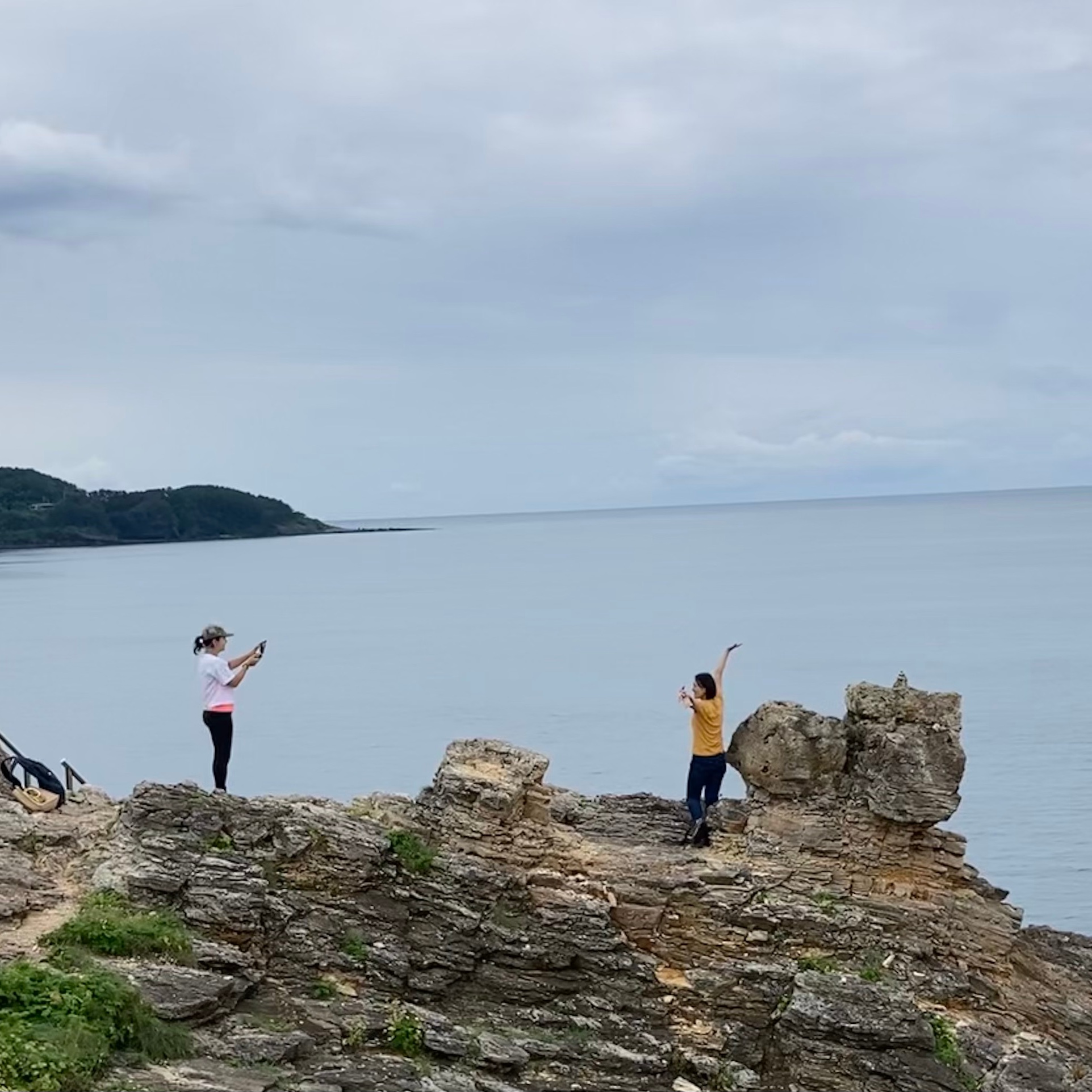

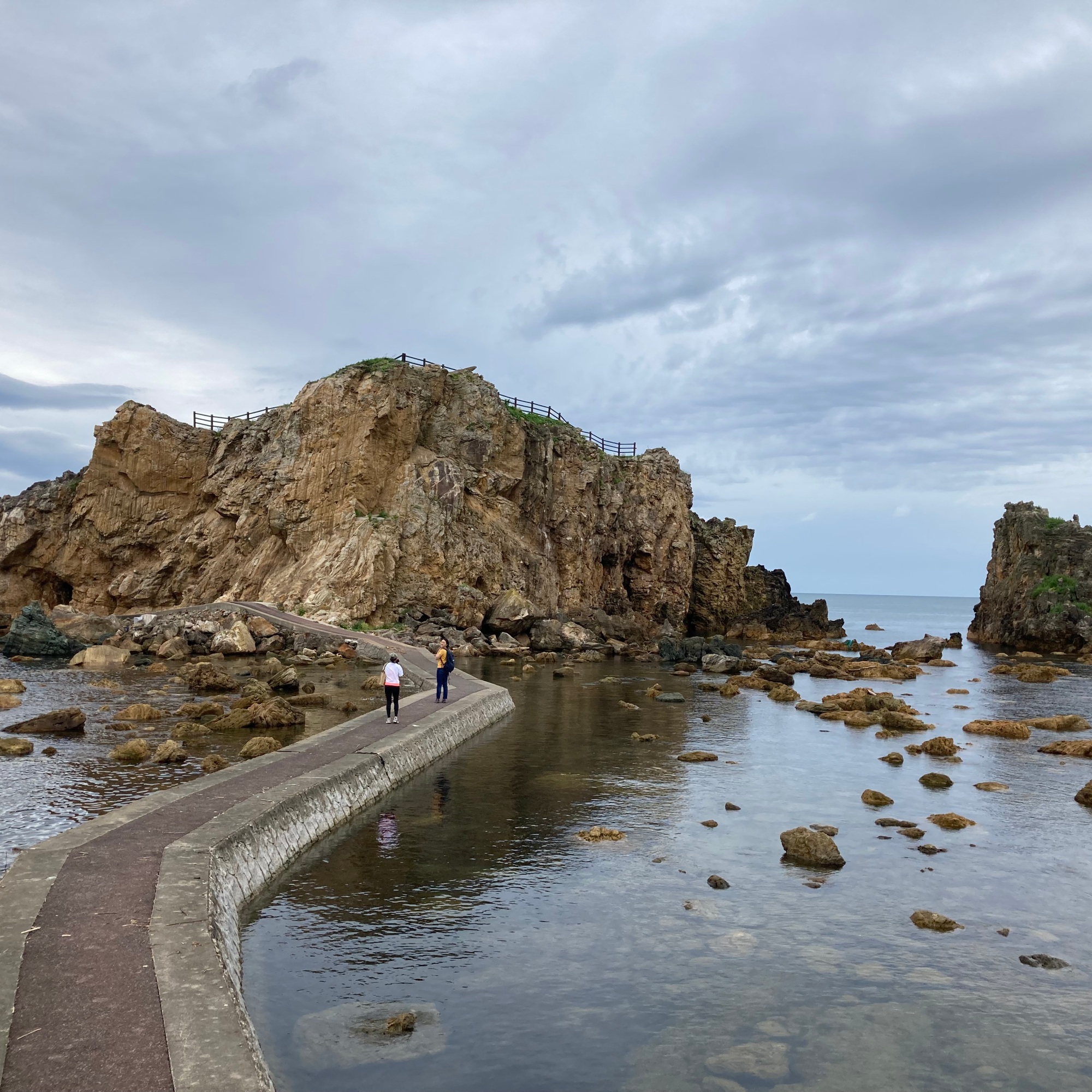
On a whim, I continued south to the westernmost tip of the coast, to take a soak at the Koganesaki Furofushi Onsen. This is a hotel, but it accepts day-use guests. There’s an internal bath, with a window overlooking the sea. But the real attraction are the two outdoor baths, on the tip of the coast (one mixed, one for women). The minerals in the water give it a brownish, cloudy colour. I was alone in the bath and watched the seagulls out on the rocks, finishing a book I took with me on this trip. Very peaceful. (I later saw on Facebook that an Israeli acquaintance living in Japan visited the same onsen today; we probably missed each other by an hour or so. Talk about coincidences.)
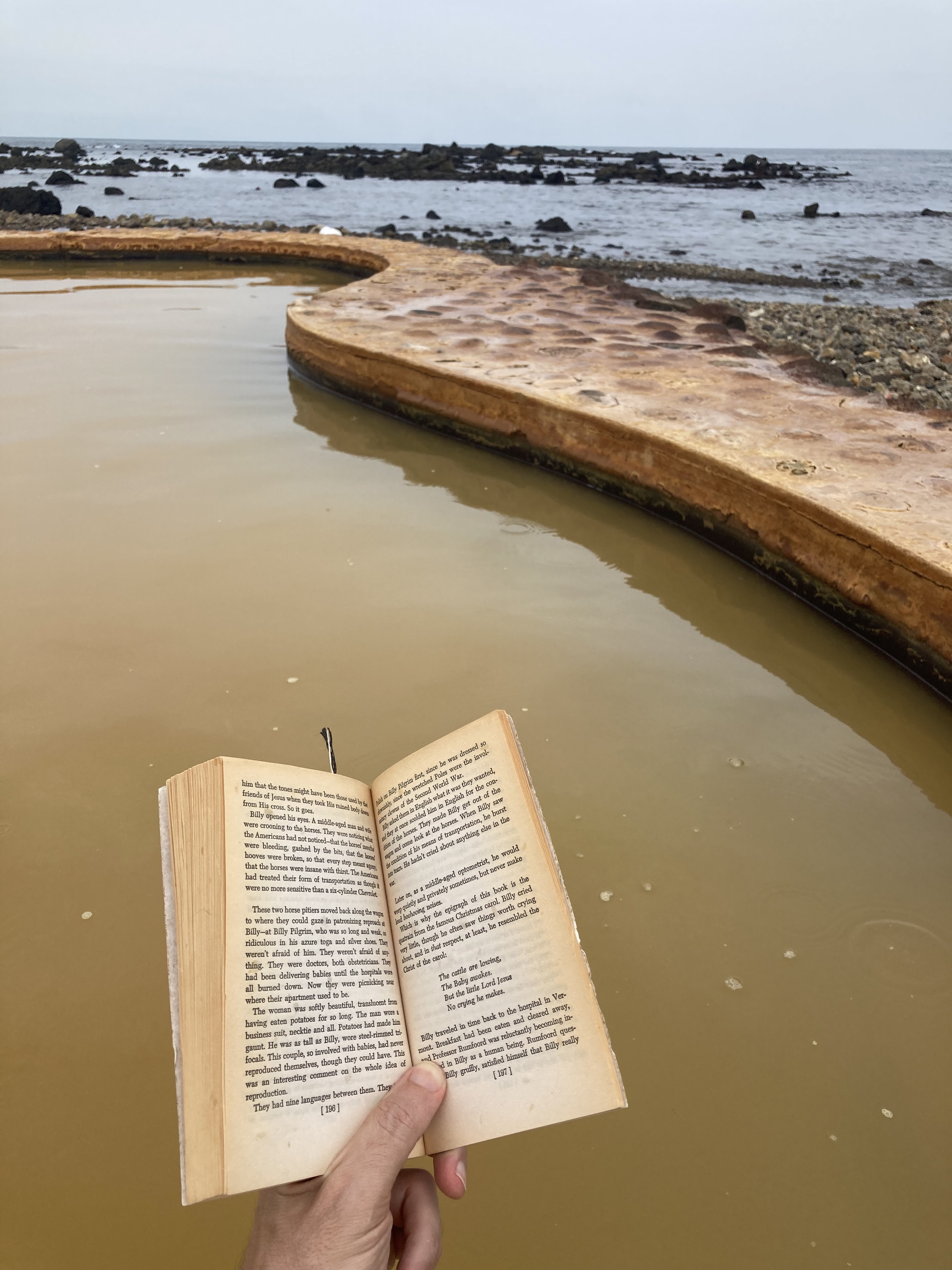

By now, it was raining quite heavily, and I paid dearly for this unplanned southwestern detour, as my hotel for the night was located at Lake Towada, a good 2.5-hour drive. Because the freeway was partly closed, half of the journey was done through country roads up in the mountains, with hairpin turns. Not a pleasant experience given the heavy rainfall and the fog. I arrived exhausted to the hotel and after a quick dinner and a quick soak in the local onsen, went to bed early.

Day 3: Towadako > Shingo > Sakayu > Towada
It still rained in the morning, and it was very windy, so my plan to take the ropeway up to Mount Hakkoda was scrapped. I headed east to a small village called Shingo, which would have remained anonymous were not Christ himself buried there. Yes, that’s right, Jesus is not buried in Jerusalem after being crucified there at the age of 33. His brother took his place on the cross, and Jesus moved to Japan to live peacefully to the ripe age of 106. Sounds improbable? Not according to the story told in Shingo, which you can read about in the image below.



After this jarring pseudo-historical experience, I continued east to Towada, another sleepy town (pop. 60,000), to visit the Towada Art Center. This was one of the highlights of my trip. This modest-size museum has some very interesting modern-art installations, that transcend beyond regular art exhibits. They challenge all senses and provide a couple of hours of delightful entertainment. Outside the museum are some Yayoi Kusama works, including one inevitable dotted pumpkin.



My hotel for the night was in Towada, but as I still had time I drove back west to Mount Hakkoda to visit the famous Sakayu Onsen. This acidic-water and pungent smelling onsen is popular in winter, when everything is snowed down, but even in summer it was pretty packed. The main attraction here is the large, mixed-gender Hiba Senning Furo (“1,000-person bath”), situated in a large wooden structure. It provides for a unique experience harking back to the days when such all-family baths were common.


Day 4: Towada > Misawa > Shiriyazaki > Mutsu
The sun was out this morning, for the first time on my trip. I drove from Towada to Misawa, a town famous mostly for its US Air Force base. The American presence is noticeable in the center of town, where most shops display English signs and the central shopping street has signs calling it Main Street.

I visited the Misawa Aviation & Science Museum, located next to the base. Although the museum is mostly suitable for children, with many experiential exhibits, it is just as interesting for adults. It displays the beautiful red-painted Miss Veedol, the first airplane to fly non-stop over the Pacific Ocean (it took off from Misawa), as well as the first prototype of the modern-day, best-selling business jet: Hondajet. The second floor is dedicated to space, and there’s a model of the Hayabusa spacecraft, which famously landed on an asteroid to collect rock samples. From the terrace of the museum one can watch the fighter jets and helicopters taking off from the nearby base.

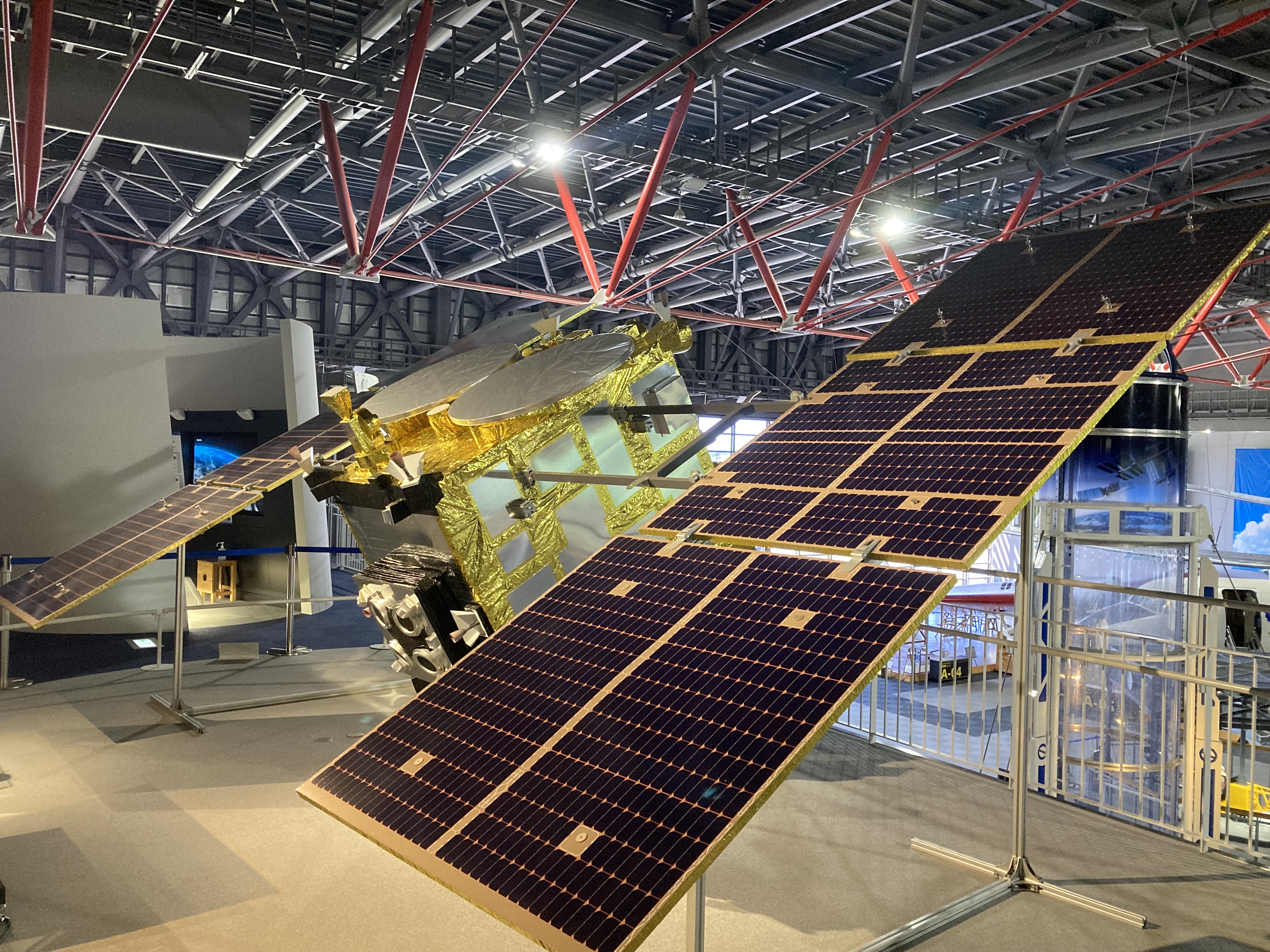
From Misawa it was a straight drive north to the Shimokita Peninsula, the topmost part of Honshu. The eastern point is Shiriyazaki Cape, which hosts the eponymoous white lighthouse. It’s 128 stairs up to the top, which provides beautiful views of the Pacific Ocean and the surrounding countryside. The area is also a grazing area for horses and cattle, which one can see up close while driving to the cape.
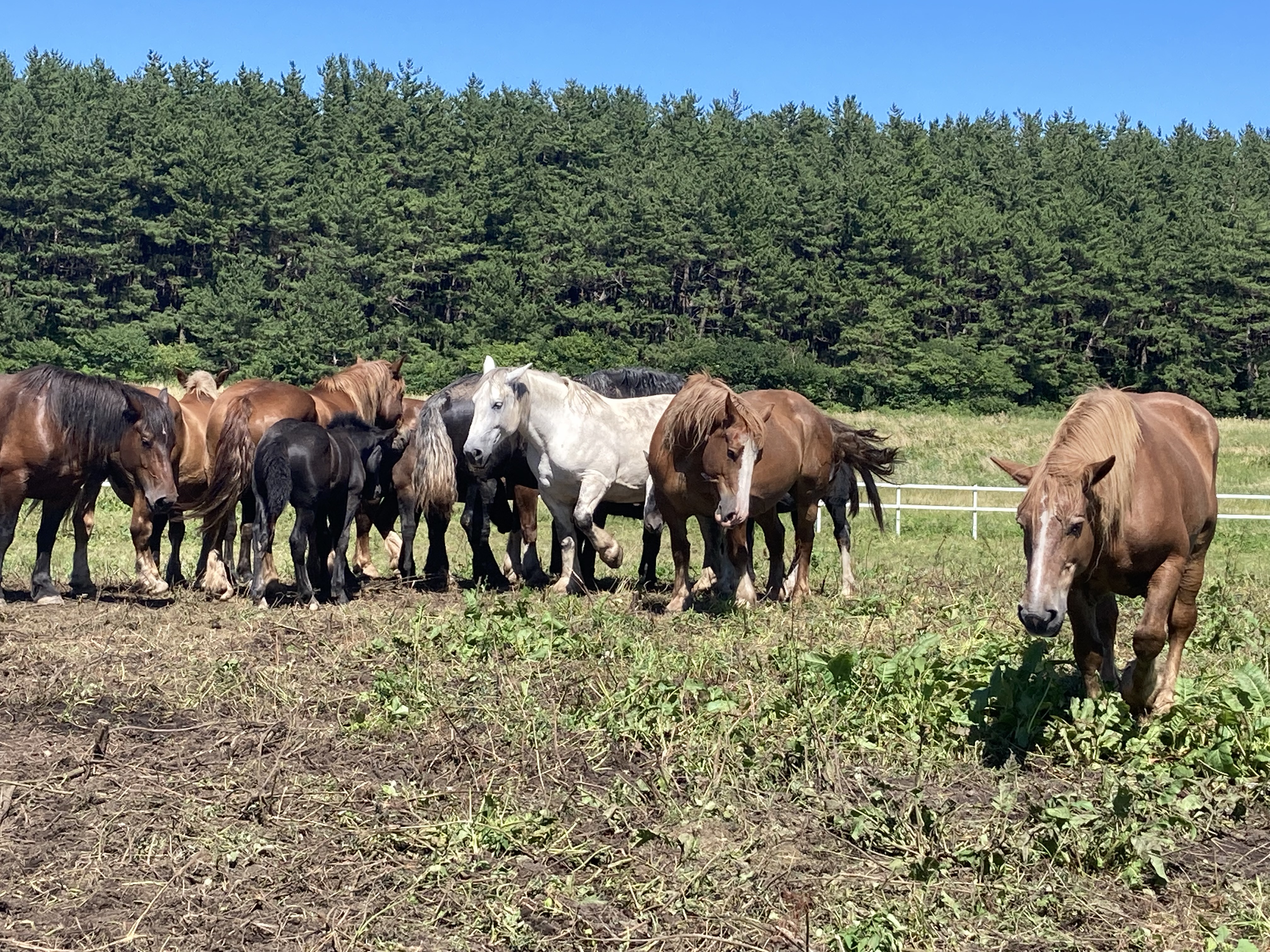
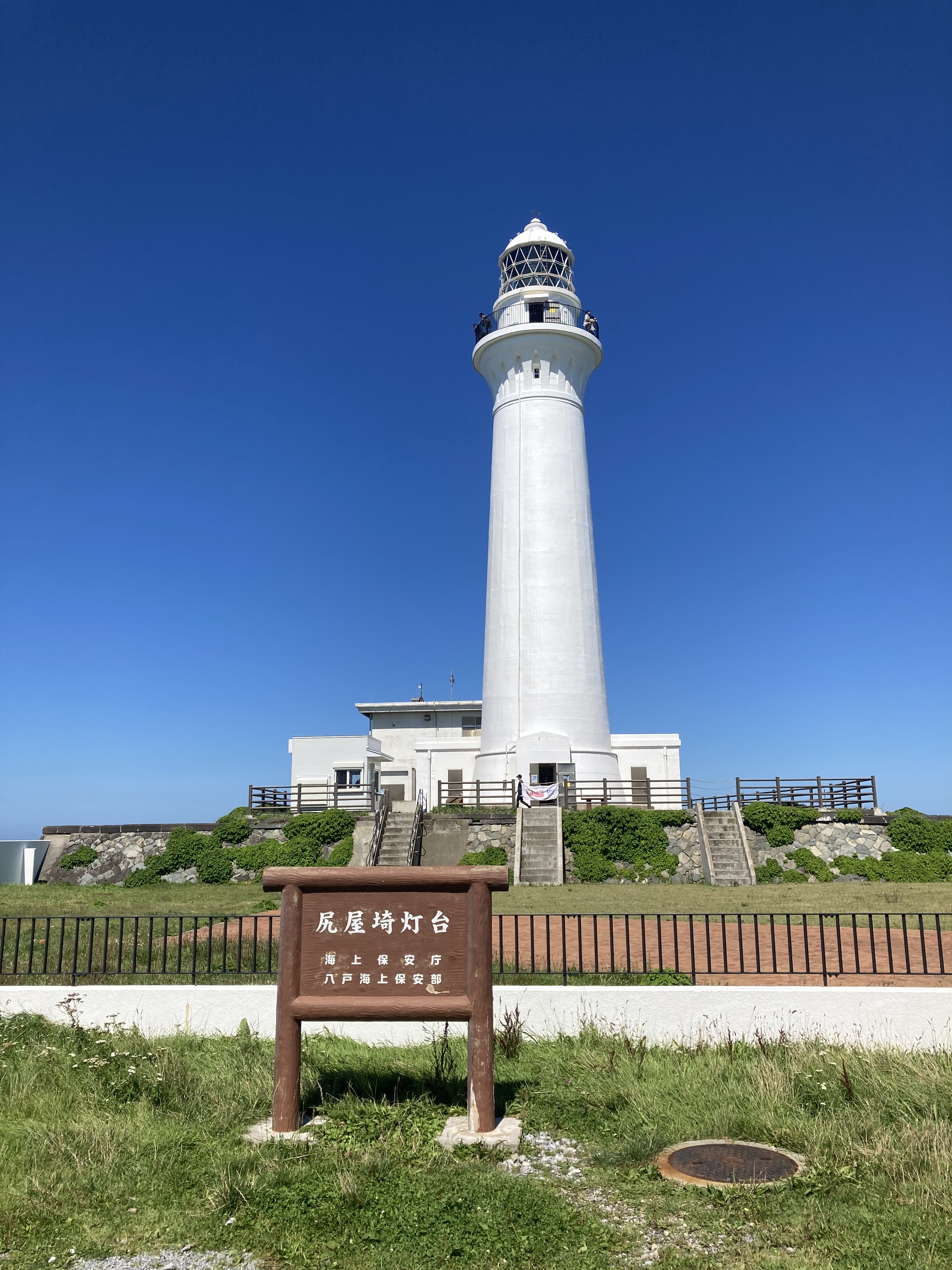
Although it was mid afternooon when I was done with the cape, I was a little tired, so I retired early to my hotel in Mutsu, the only sizeable city (pop. 55,000) in the peninsula, for an early dinner of sushi and an early night.
Day 5: Mutsu > Osorezan > Yagen Onsen > Oma > Hotokegaura > Mutsu
The skies really opened up today. It rained heavily, nonstop, all day. It’s a good thing I had planned a day of mostly driving, but the short visits to each place I stopped at along the way meant I was drenched several times…
First stop was Bodai-Ji Temple at Osorezan (I drove through the observatory first, but all I saw was clouds). This large Buddhist temple sits in the caldera of an active volcano and is thought to be one of the gateways to the underworld. The mountain emits hot volcanic gases, so the entire experience is accompanied by a strong smell of sulphur dioxide (think rotten eggs). Beyond the main temple building are various small shrines, which require a climb through eerily somber landscapes.
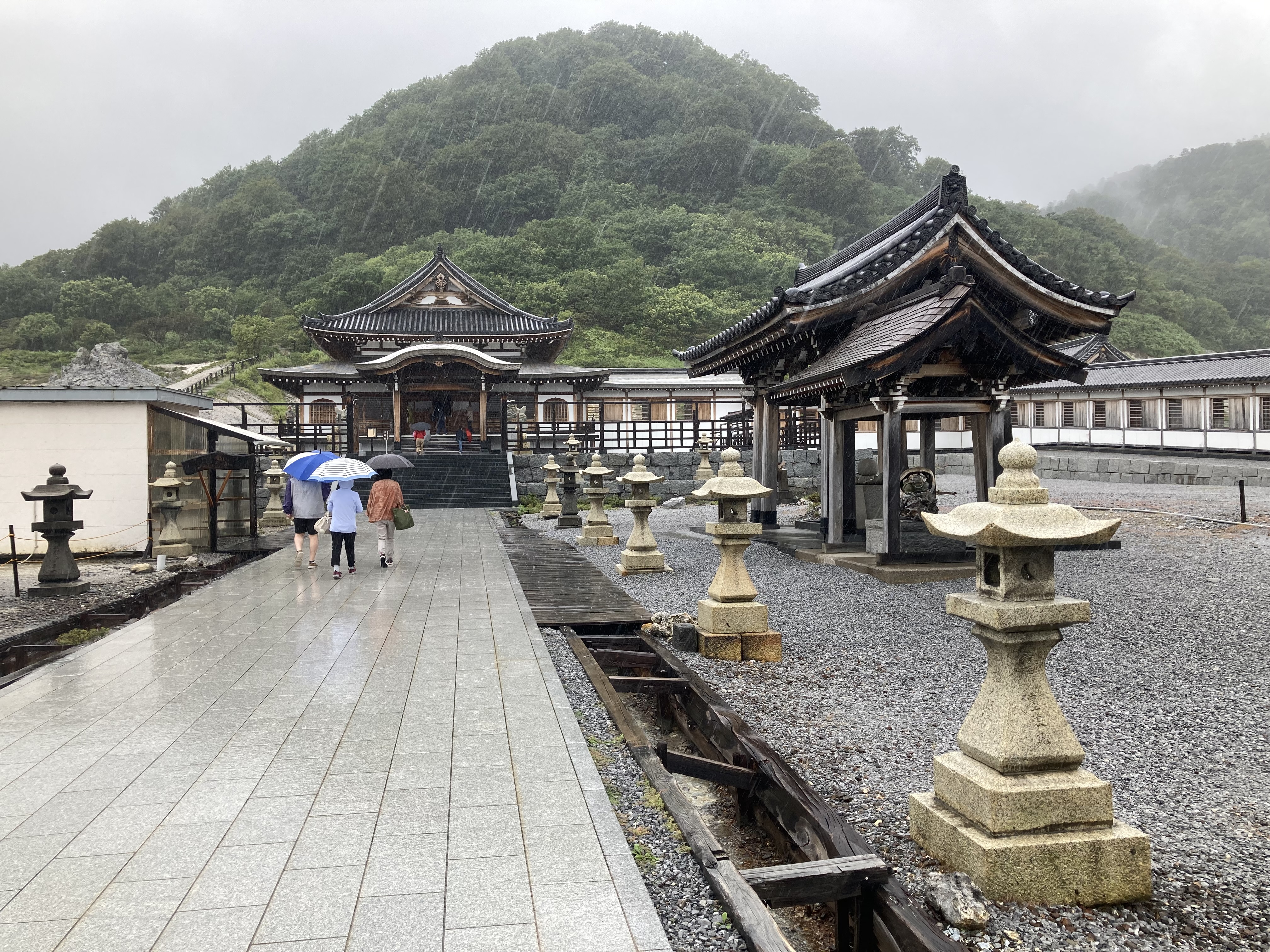
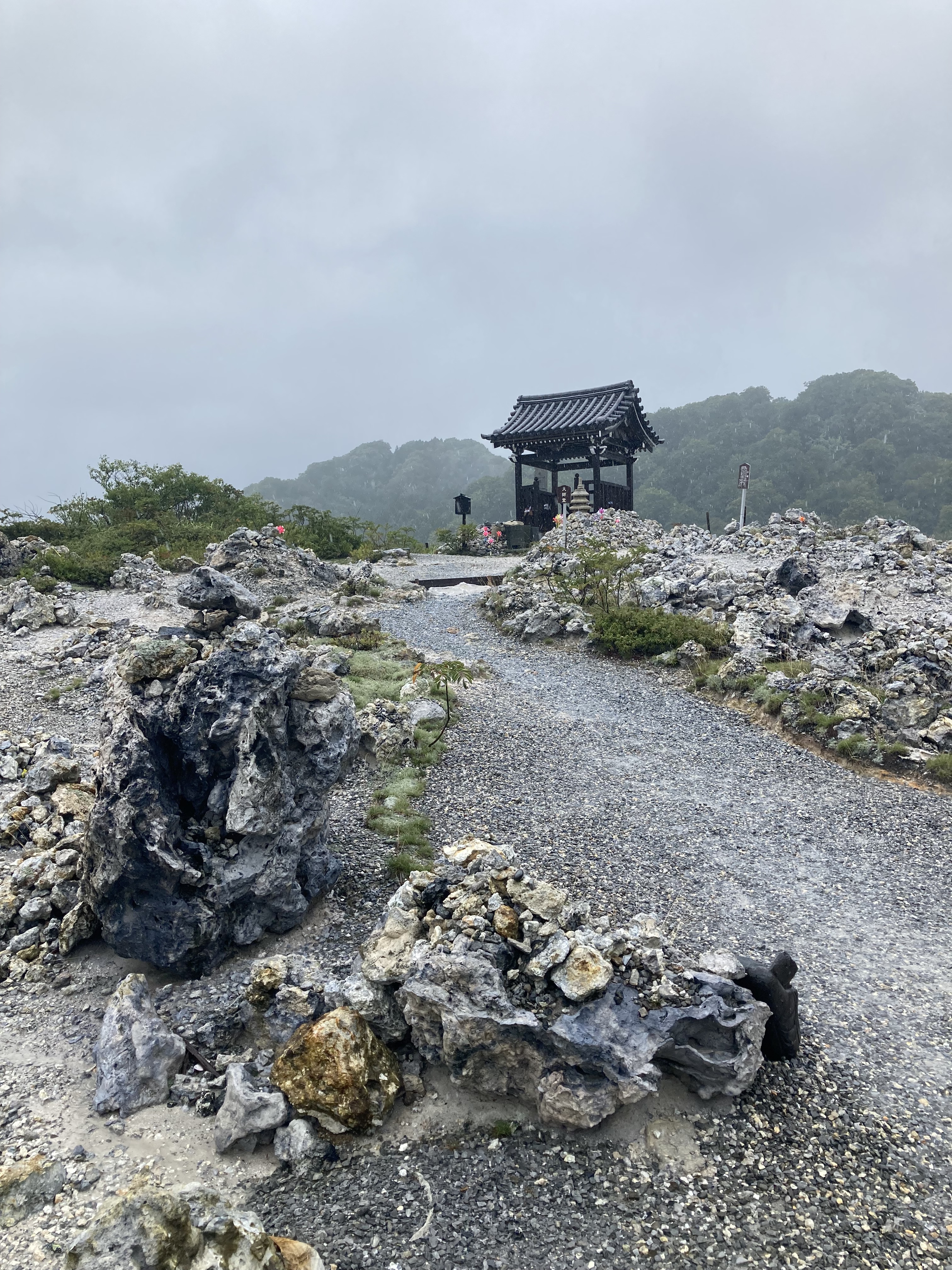
Further north in the Shimokita peninsula is Yagen Onsen, a small (very small) village with several hot springs. I visited the Kappa no Yu onsen, a bit further up the road. There are two external baths, for each gender, overlooking the Ohata River. I was mostly alone in the onsen, a wonderful experience given the nonstop rain and slightly chilly air.


The northernmost tip of the main island of Japan, Honsu, is Cape Oma. There’s a small monument designating this point, and that’s pretty much it. The winds here were incredibly strong, and the rain was coming in horizontal sheets of water. All I managed to do was run up to the monument for a quick photo before returning to the car (and changing my clothes). The experience reminded me of the northermost tip of Japan (Cape Nosappu in Hokkaido), which I visited a few years ago. It wasn’t raining then, but it was equally windswept.
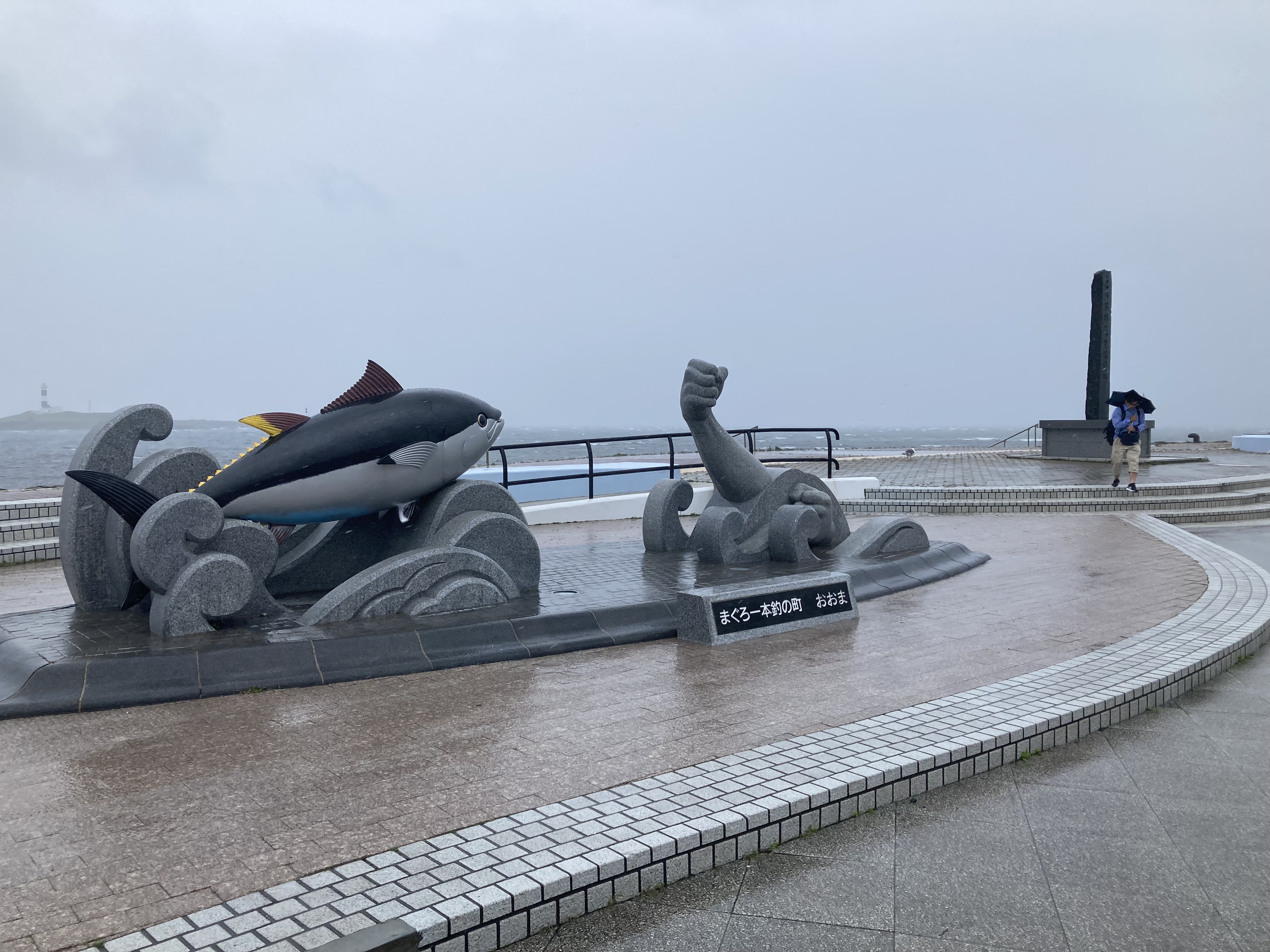

Driving down the western coast of Shimokita I arrived at Hotokegaura. This is a series of rock formations along some cliffs facing the Mutsu Bay (connecting the Pacific Ocean with the Sea of Japan). From the parking lot is a 20-minute walk down a forested path, a mix of a trail and wooden stairs, to the sea level. It’s not an easy path (especially the way back up), but it’s manageable. Again, given the heavy rain, I was all alone.



Back to my second night in Mutsu. Tonight was the first night of the Tanabu Festival. The rain did not deter the celebrations, with the portable colorful shrines (mikoshi) making their way slowly through the streets, surrounded by dancers and music players.
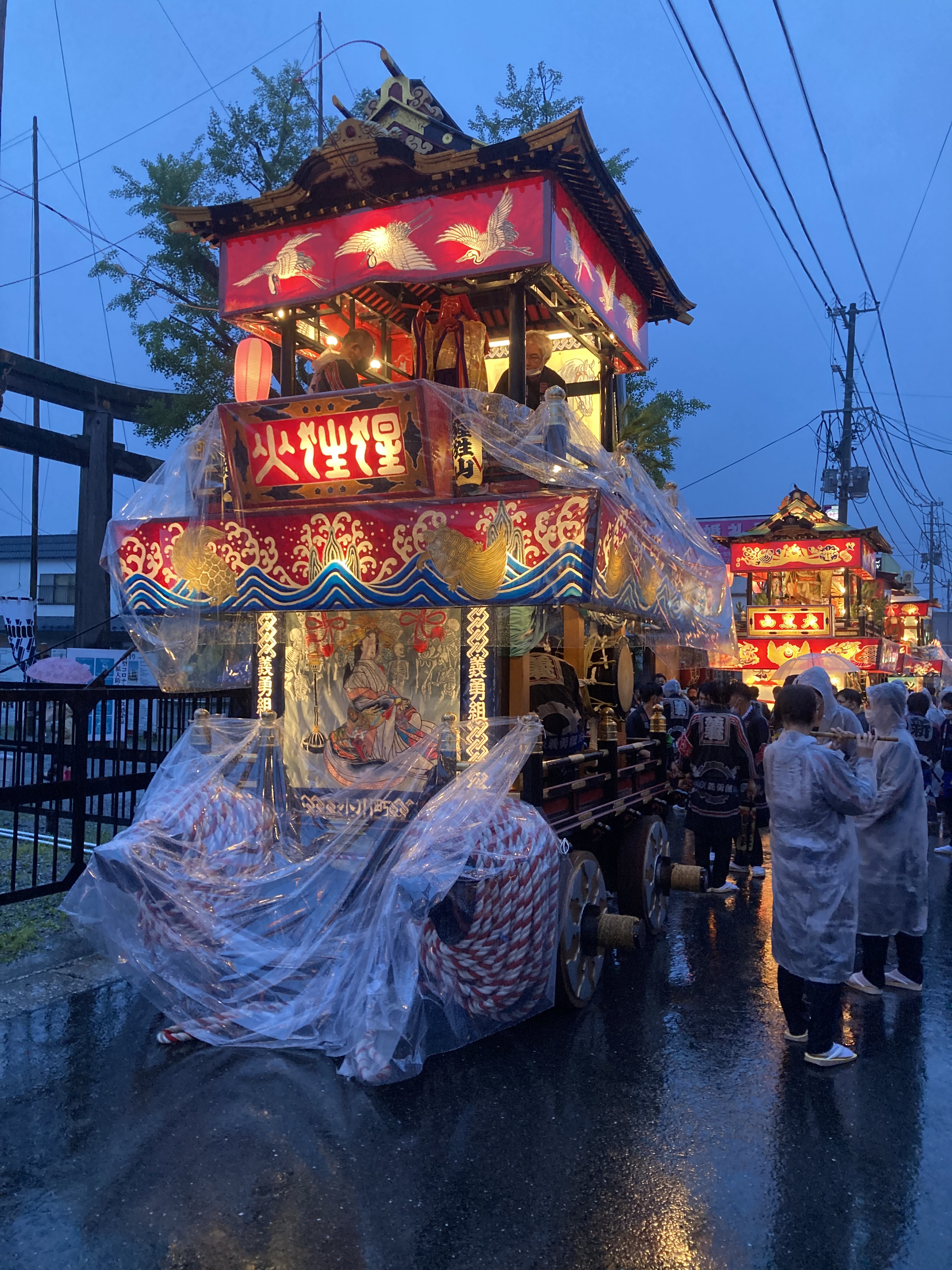
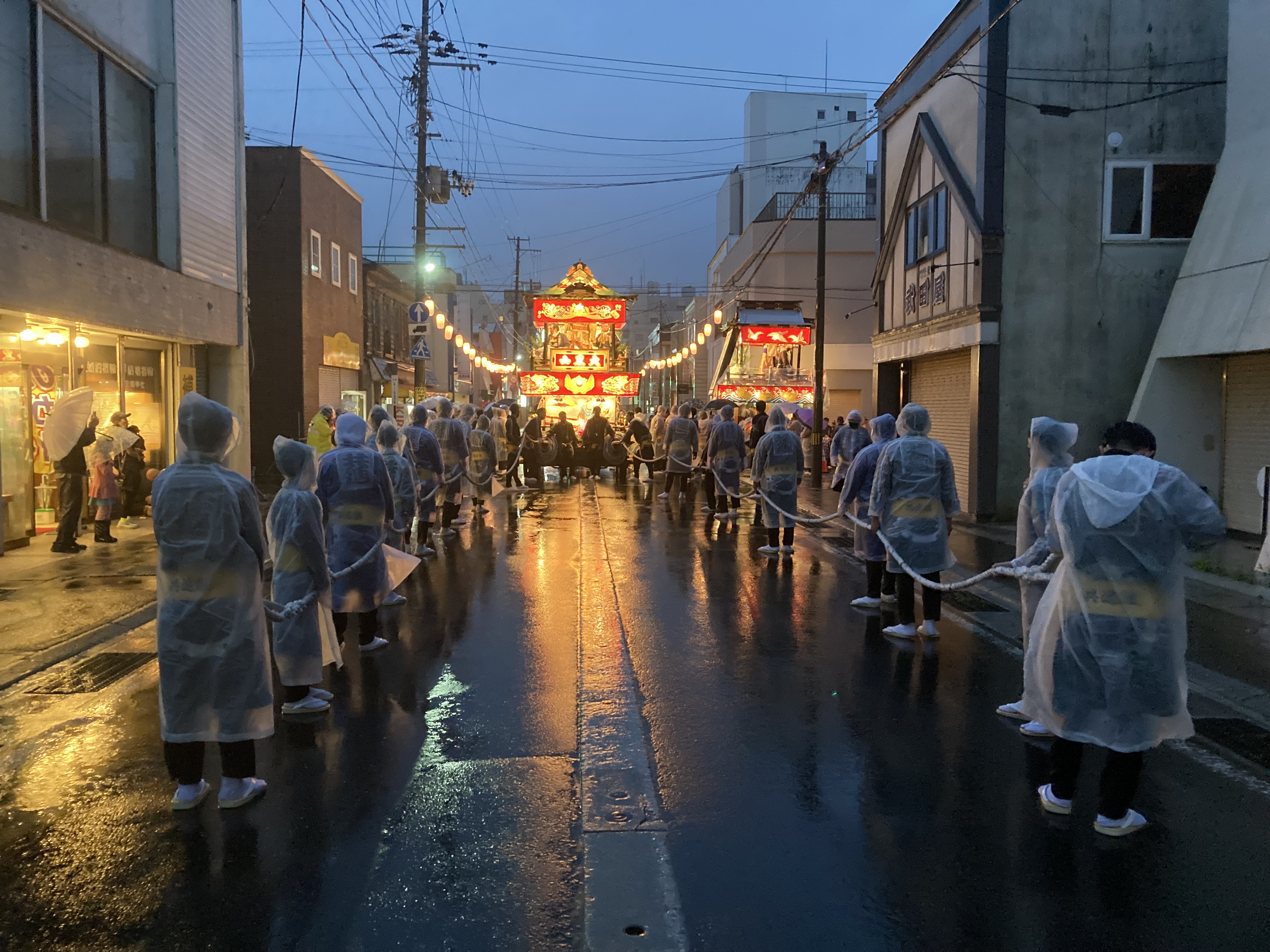
Day 6: Mutsu > Aomori > Hakodate
I drove from Mutsu to the shinkansen station at Shin-Aomori and returned the car. Then I boarded the Hayabusa Shinkansen to Shin Hakodate Hokuto station (opened in 2016). The ride is about one hour, and the train passes the 54km Seikan tunnel connecting Honshu and Hokkaido. There is a connecting JR train that goes to Hakodate Station. I checked in and went for a quick tour of the area before Shabbat.
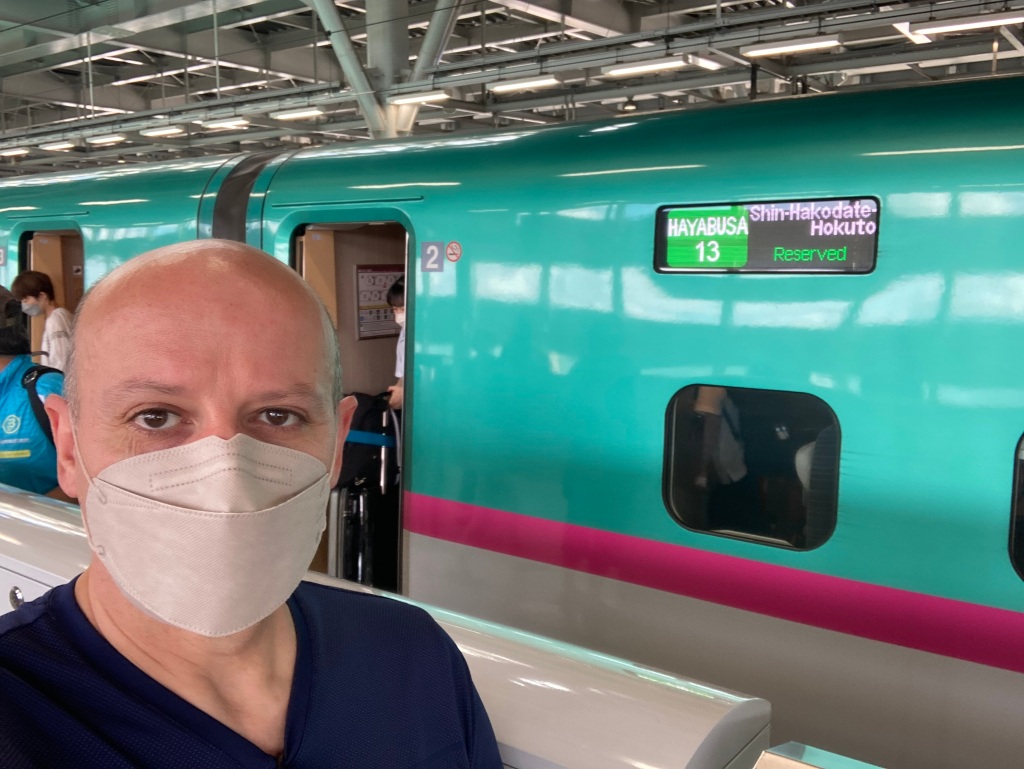
Hakodate is one of the first two ports in Japan to open up to the world after the uninvited visit by Commodore Matthew Perry in 1854. Hence, like Kobe, Yokohama, and Nagasaki, it was home to a large foreign community. I took the tram to the port area, and visited the Kanemori Red Brick Warehouse. From there I walked up and down the slopes of the Motomachi area of town, which is dotted with churches of various denominations and foreign buildings such as consulates and residences. Especially famous is Hachiman Zaka slope, but every slope has its own charm.

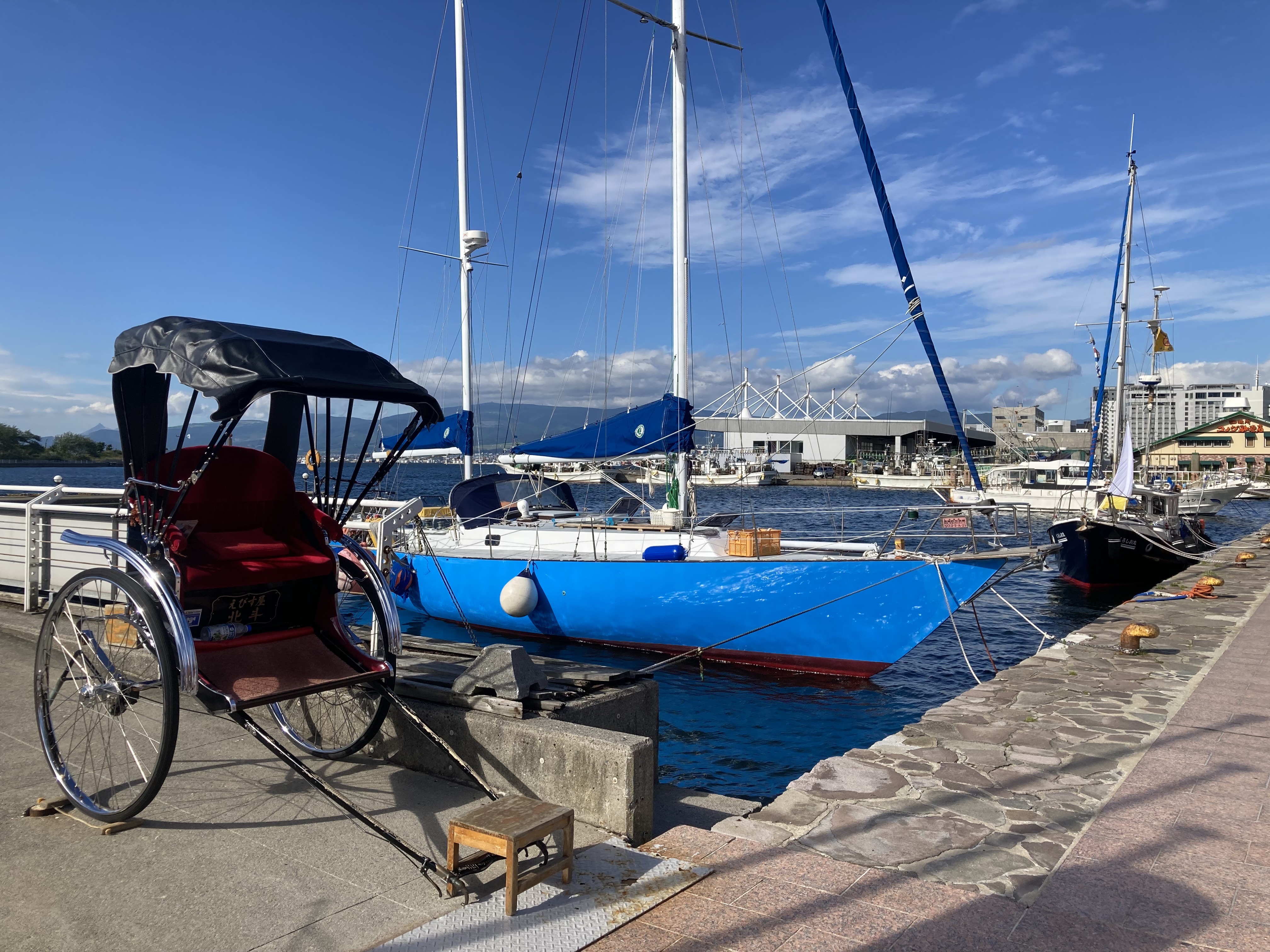

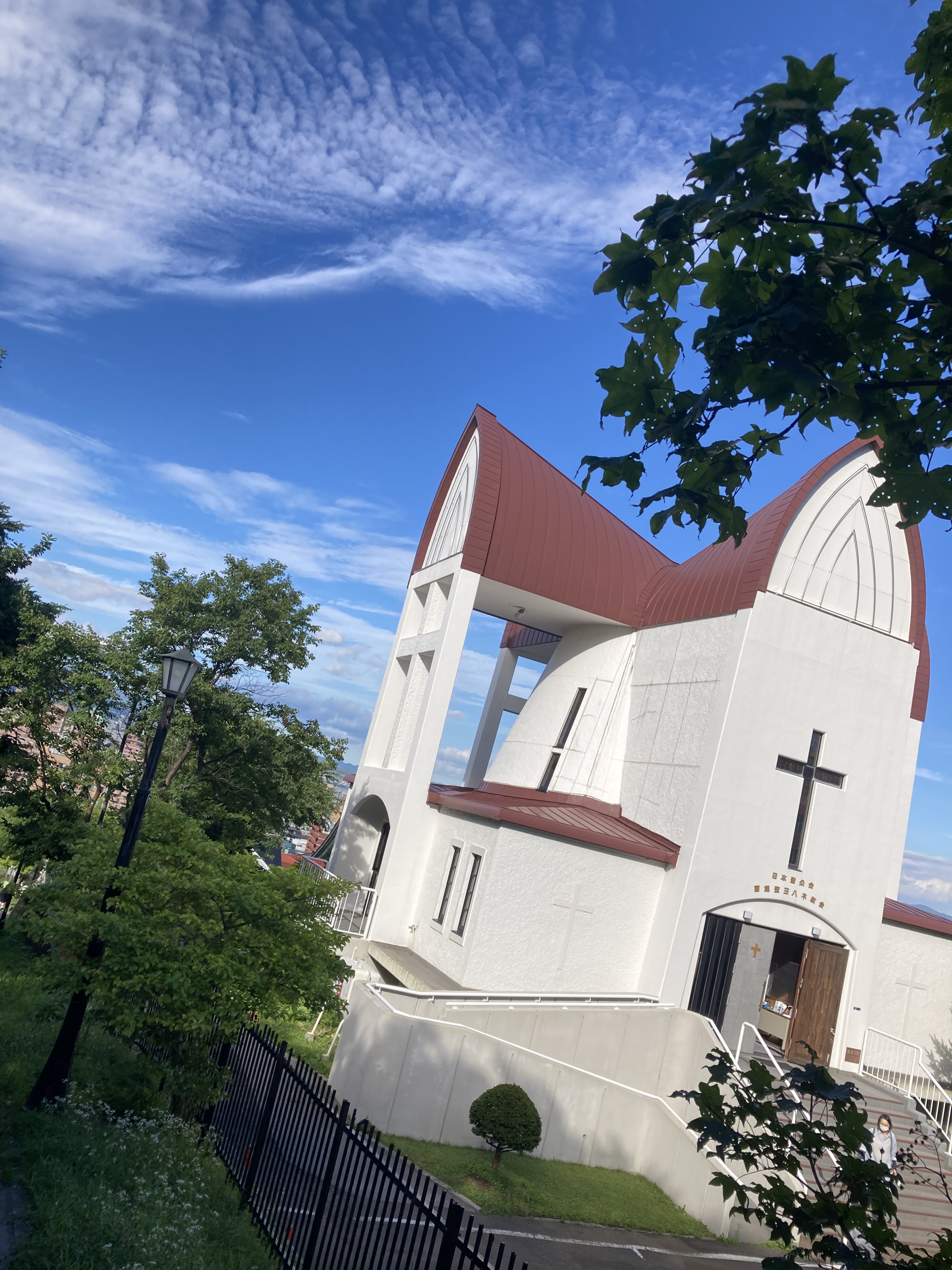
Day 7: Hakodate
This being Shabbat, I took it easy in the morning, but then spent the afternoon walking around town. I took in some of the sights I missed yesterday, but of course no photos… The Old Public Hall was so beautiful, I returned there in the evening to take some photos. I also saw the statue of Commodore Perry, erected in memory of his visit to Hakodate. Then I took the ropeway up to the summit of Mount Hakodate, to take in the night view. This is one of Japan’s Three Night Views (日本三大夜景), the other two being Kobe/Osaka (from Mount Rokko) and Nagasaki (from Mount Inasa).

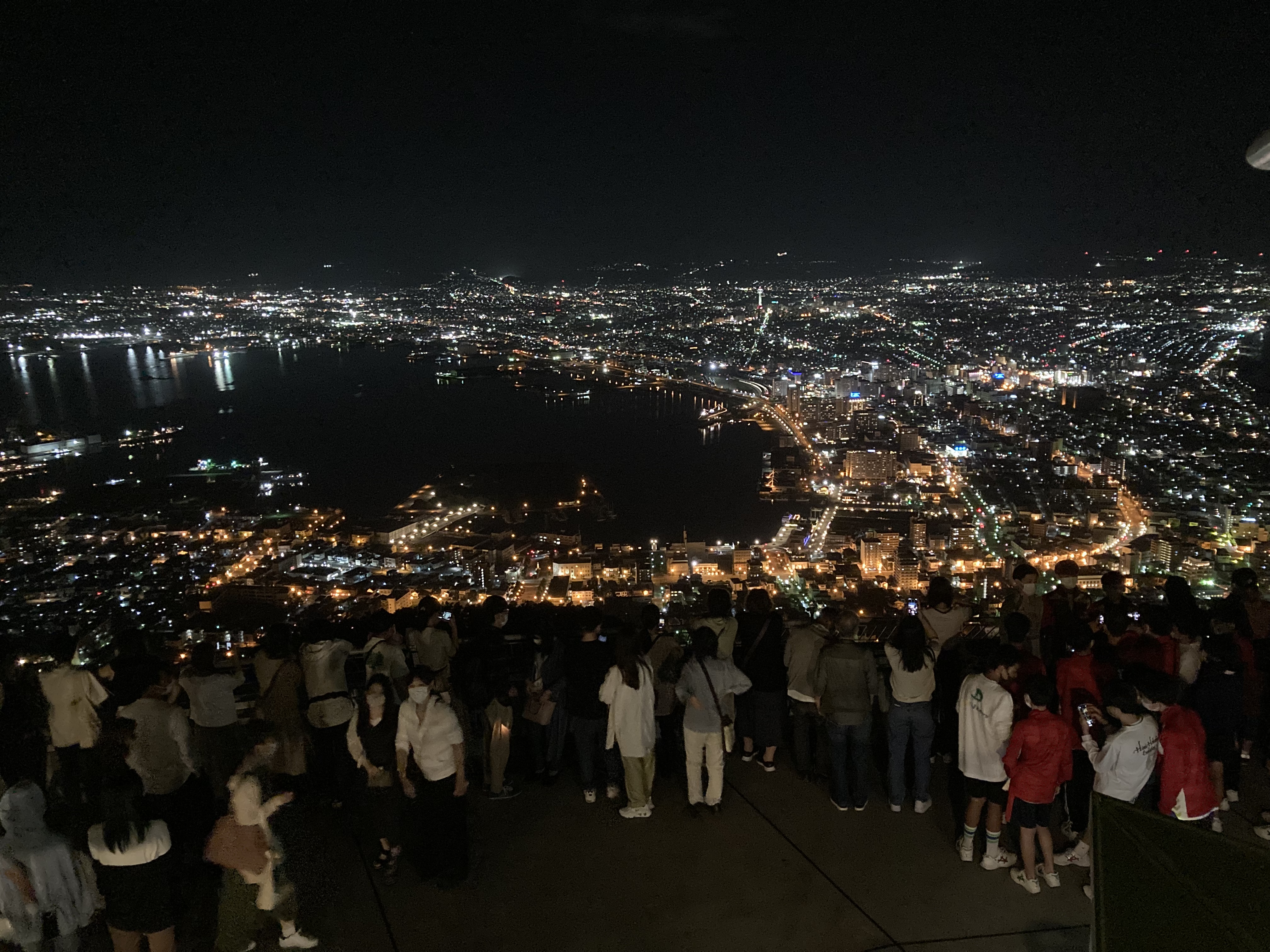

Day 7: Hakodate > Aomori
Early Sunday morning I visited the tiny Foreigners’ Cemetery, at the edge of the former foreigner residence area, facing the bay. Two of Commodore Perry’s sailors are buried here. The cemetery was locked, but it’s so tiny one can see it all from the gate.
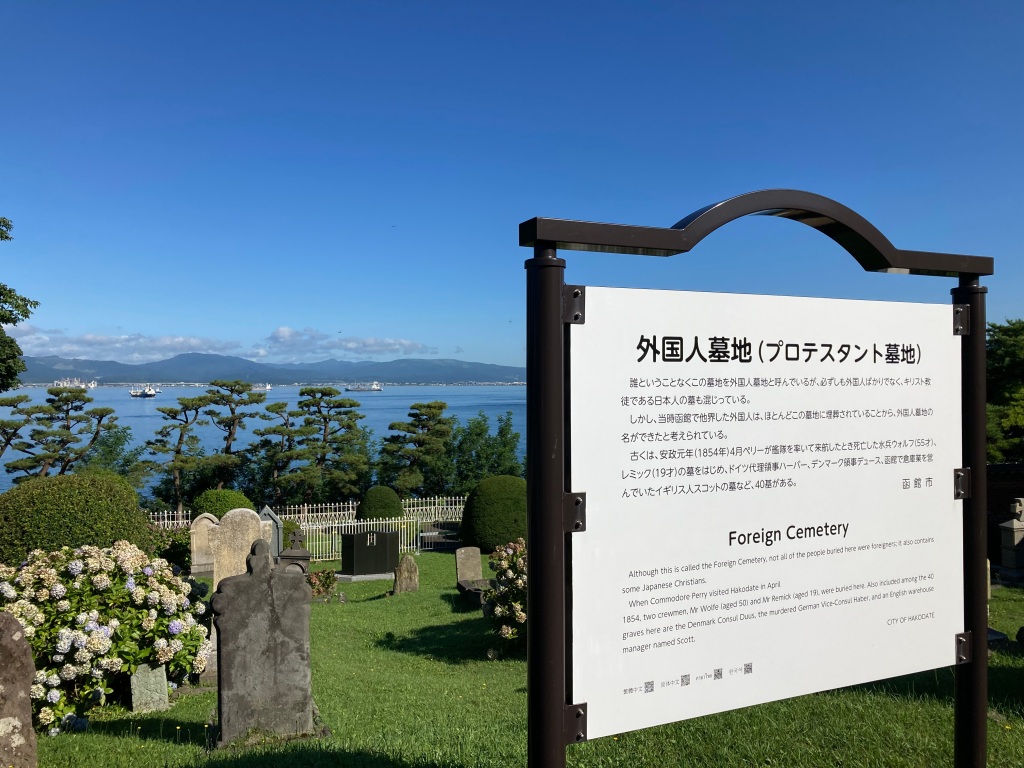
It was a beautiful day, with sunny clear skies, so I headed to the observatory on top of Goryokaku Tower, overlooking Goryokoku Park, site of the old western-style fort. It offers a full 360 view of Hakodate. The observatory has two floors, a few meters apart; for some reason everyone congregates on the top floor, leaving the bottom floor empty. Same views…
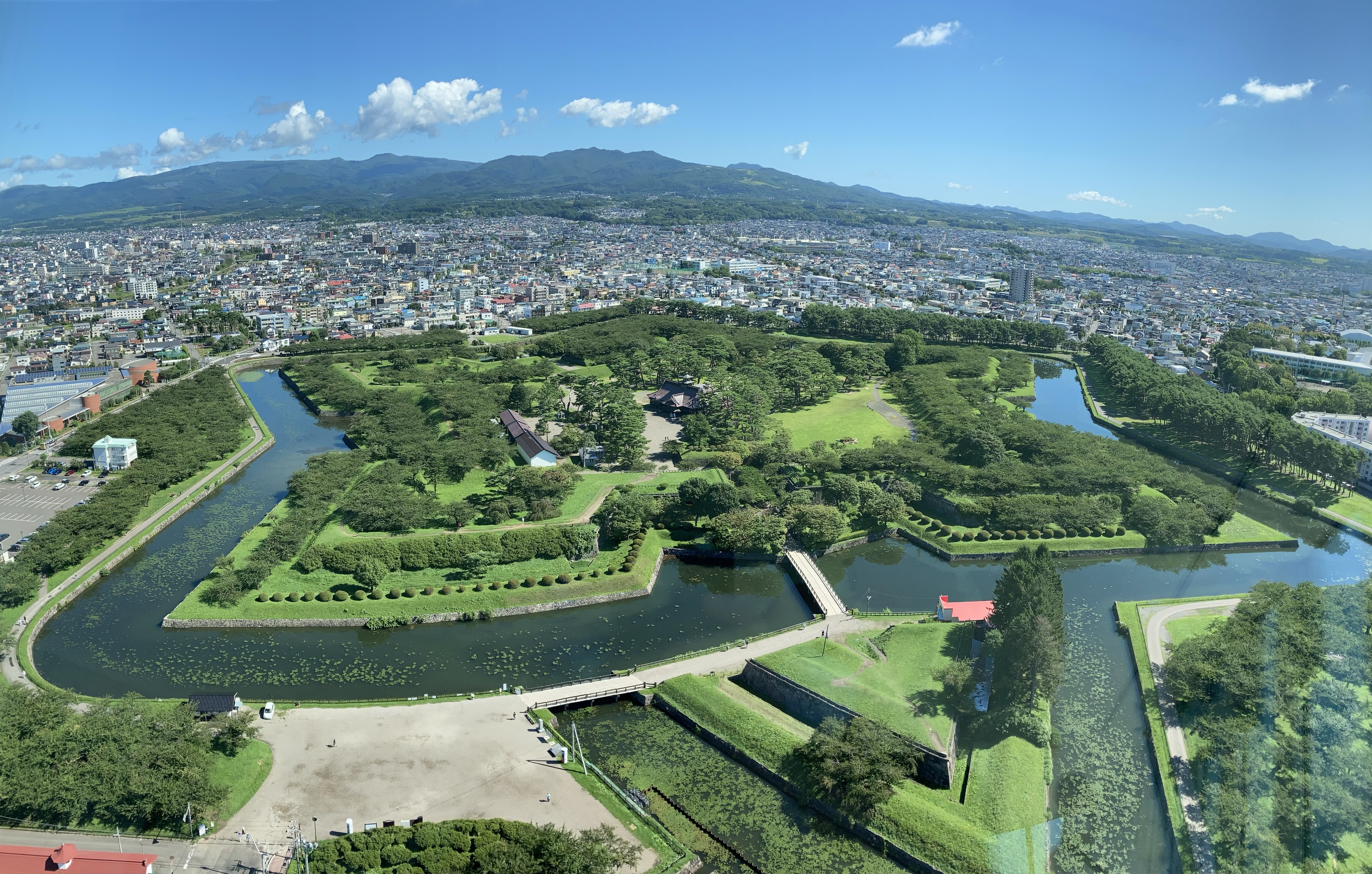
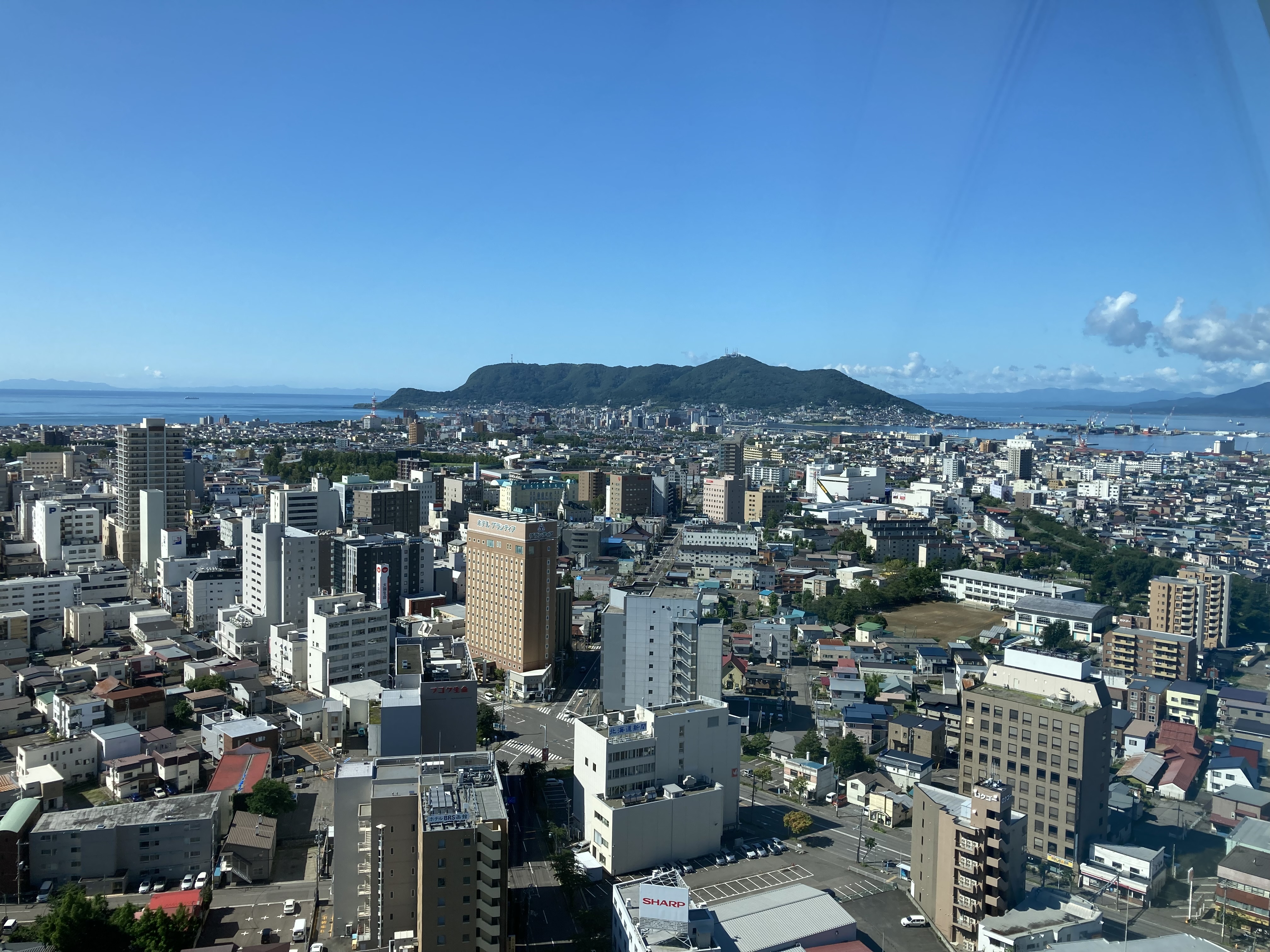

Before leaving Hakodate I visited the Morning Market next to the station, which was teeming with people examining a mind-boggling variety of seafood. Some of the sashimi and sushi on sale looked absolutely delicious, but I couldn’t bring myself to eat raw fish at 9am. The early hour didn’t seem to deter everyone else there.
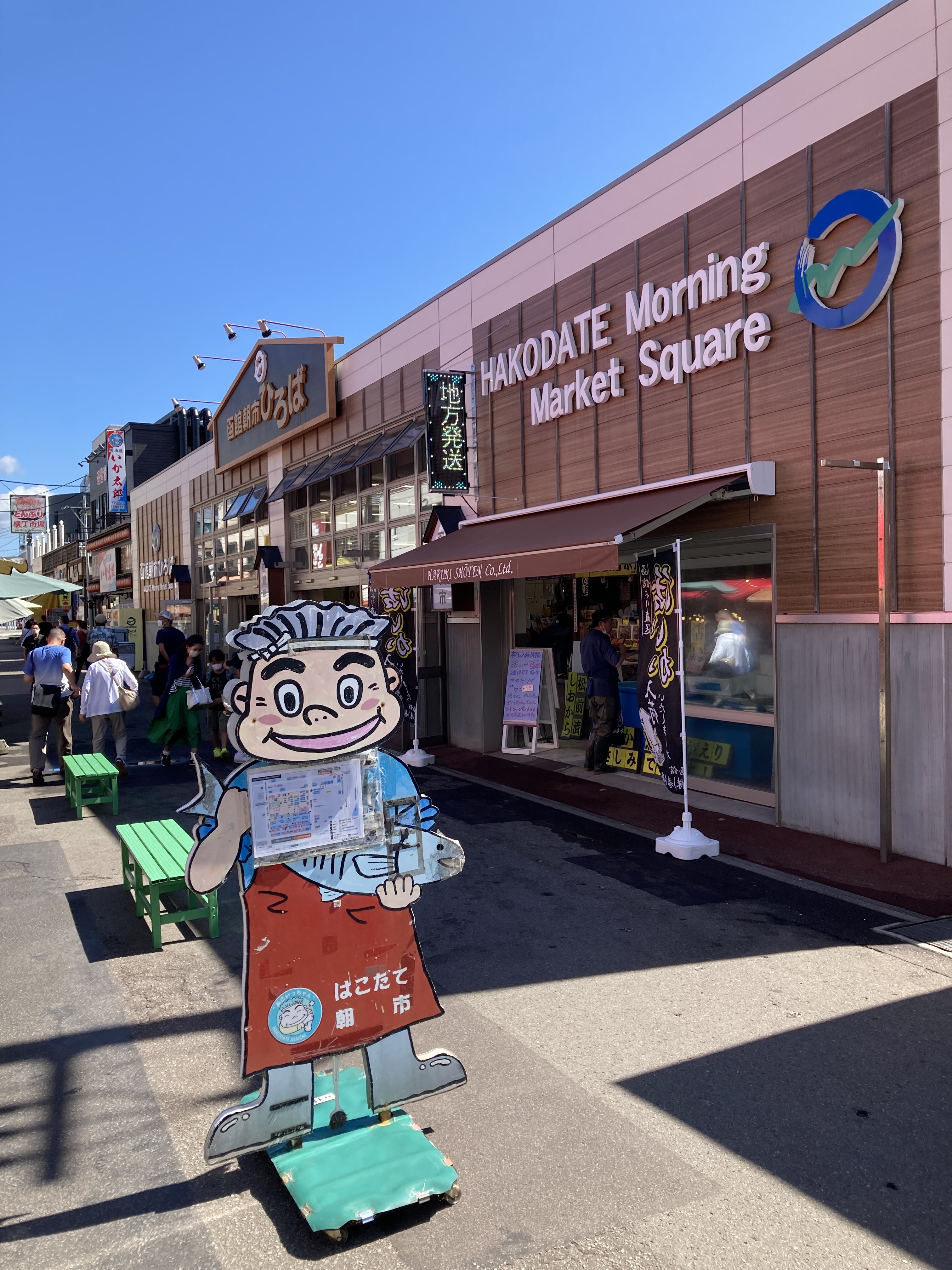

I took the Shinkansen back to Aomori. This is the place to mention (again) the fabulous, unparalleled public transportation system in Japan. The train I boarded was bound for Tokyo, 800km away, and would complete the journey in 4 hours and 20 minutes. Incredible.
Aomori city is remote, and it takes its remoteness seriously. You can cover the main sightseeing sites in a few hours, all within a short walking distance. I visited the A-Factory shopping outlet (a grand name for what would pass as one shop in a big city mall). I then toured the Hakkodamaru Memorial Ship, anchored at the port. Before the tunnel was dug, ferries were the only way to travel between Honshu and Hokkaido, and this ferry is a monument to this age of ferry glory. The ship is worth visiting not only for the trip back in time, but also for the trip back in time from a museum perspective. It looks like none of the exhibits were changed since the 1980s, when the museum was built. A fascinating experience.
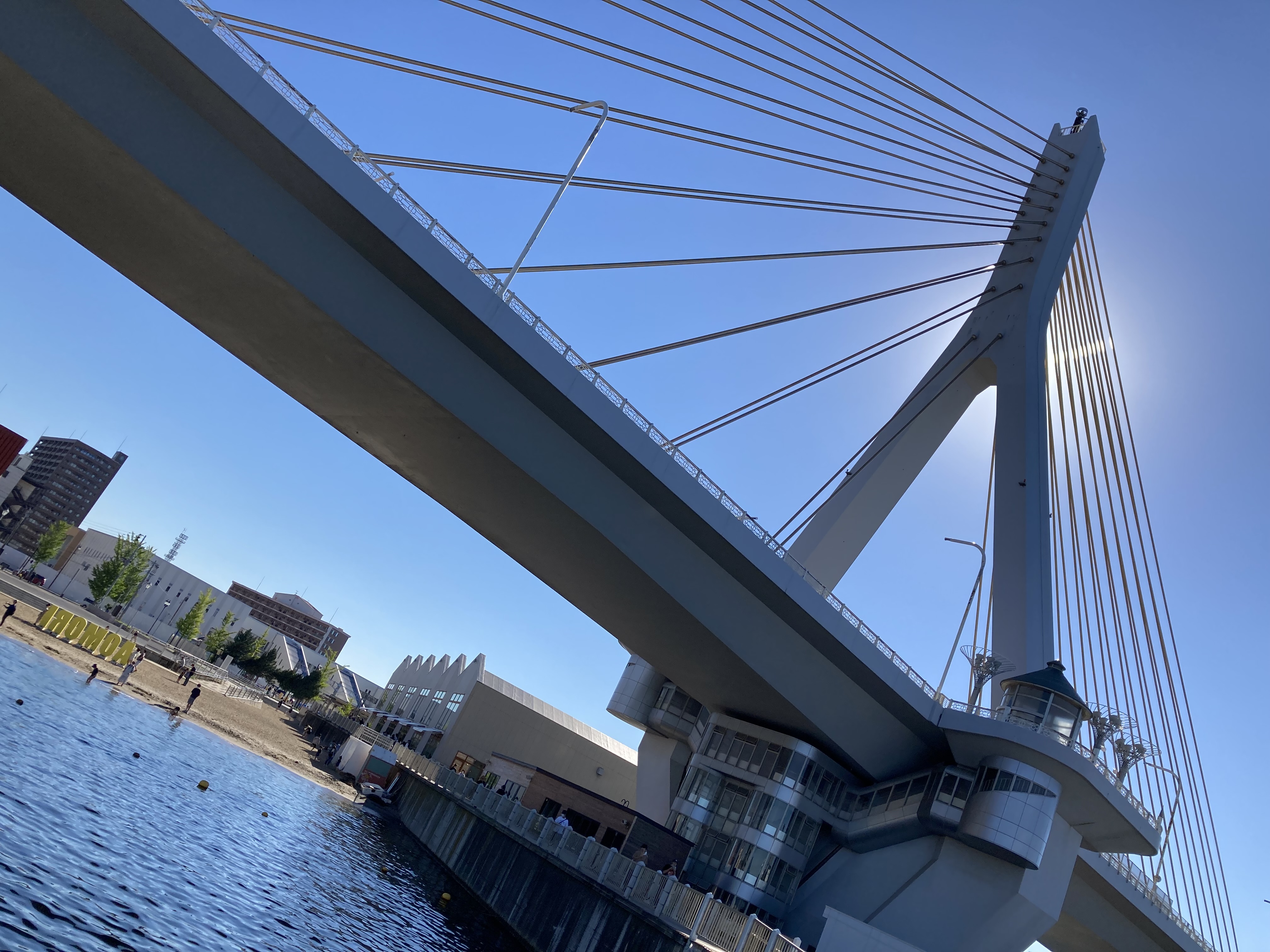

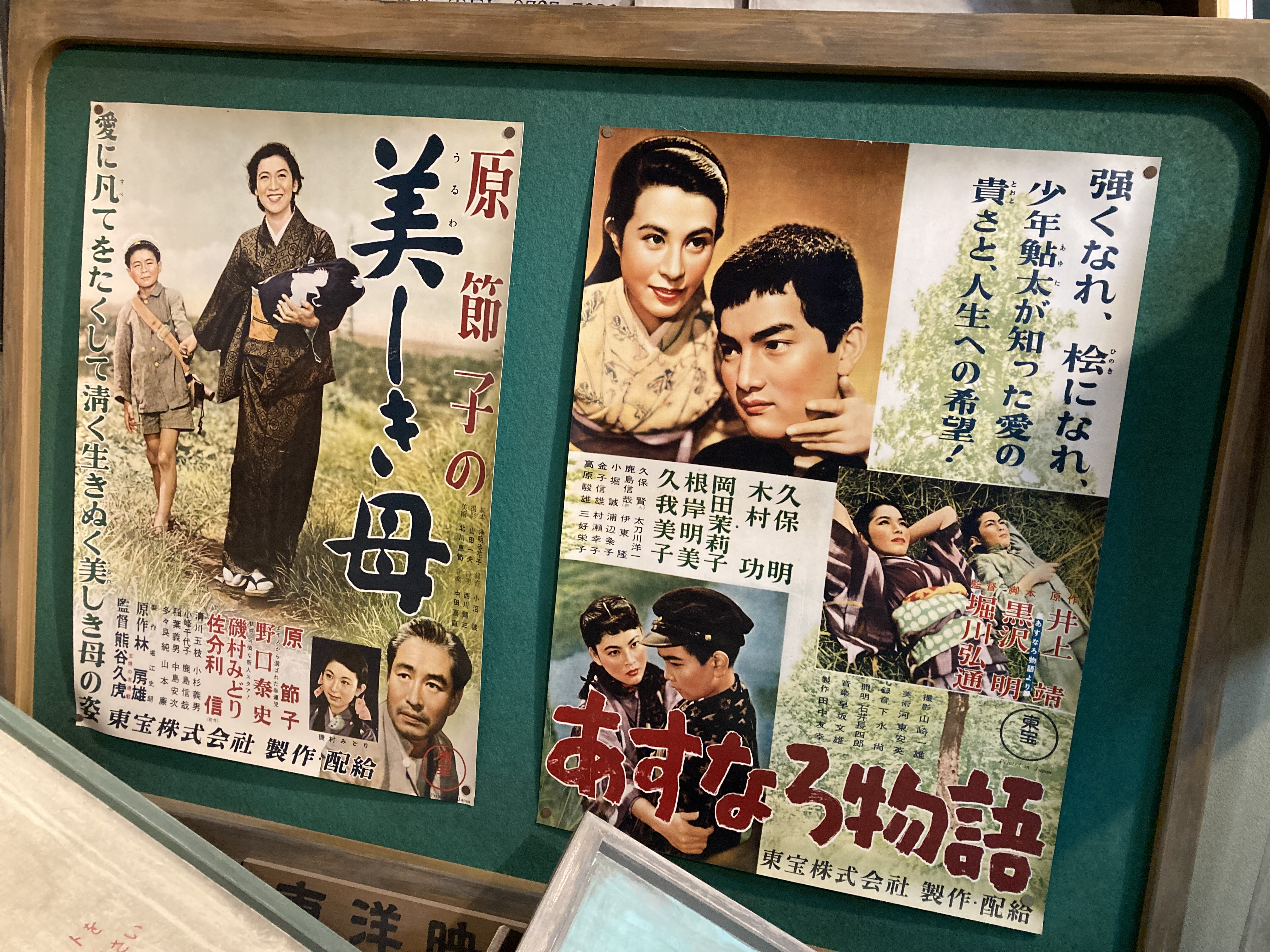
A short walk (3 minutes away) is the Nebuta Museum, a much more modern affair, dedicated to the annual festival (matsuri) of Aomori, that attracts tourists every summer (it was held two weeks ago). This festival is famous for the parade of enourmous and very elaborate floats, accompanied by huge taiko drums and dancers. The floats, made of paper, depict gods, demons, and historical figures. They take a year to build, and are destroyed at the end of the festival, except for a few which are displayed at this museum.
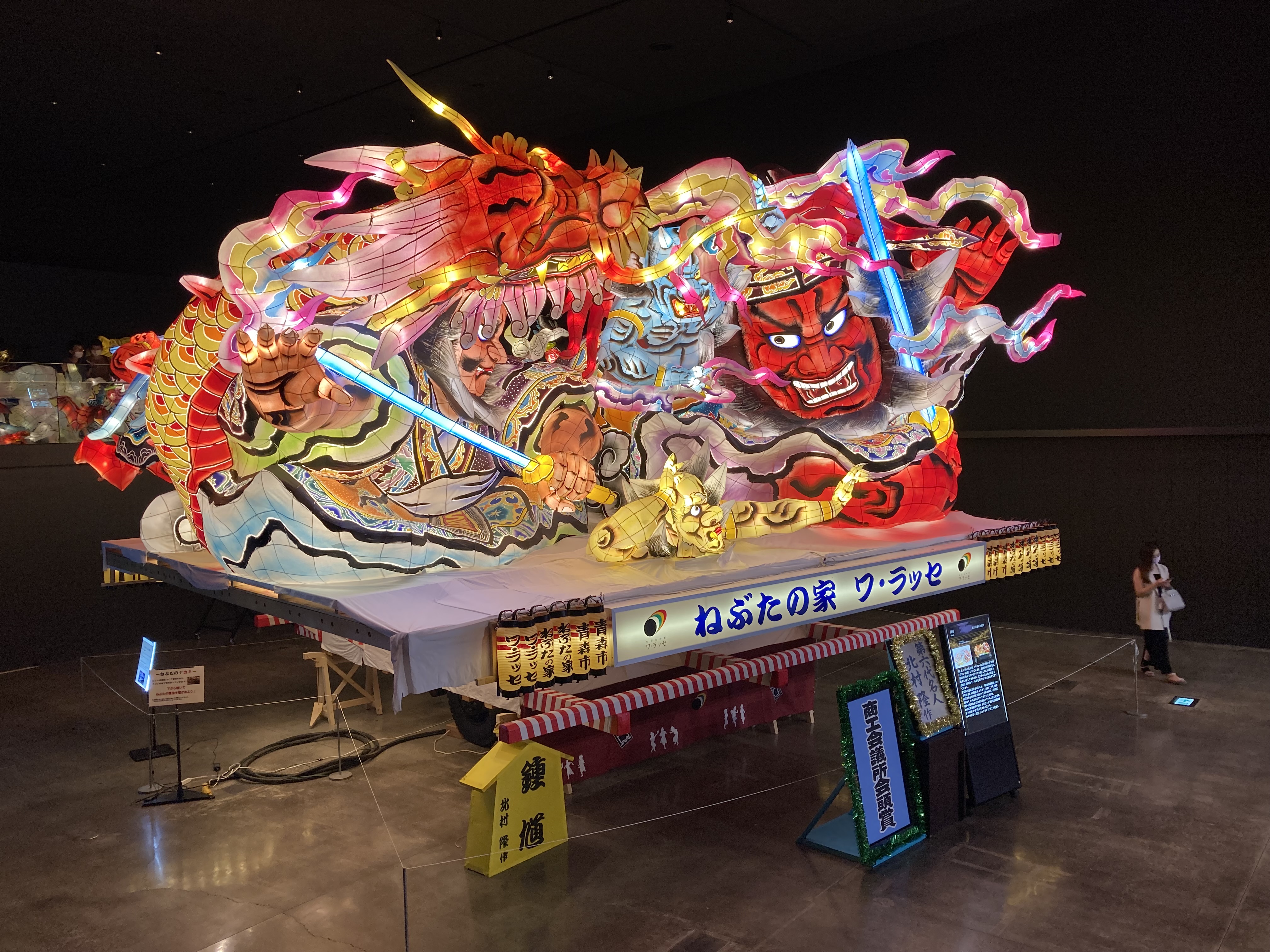

I wanted to have a late lunch at Aomori Nokkedon, where you can buy a bowl of rice and walk around to fill it with fresh seafood. But at 3pm the place was closed. Either it didn’t open on Sunday or, as the website warns, they close down when they run out of rice… So instead I had an early dinner at a great sushi restaurant, and retired for my daily soak in the hotel onsen.
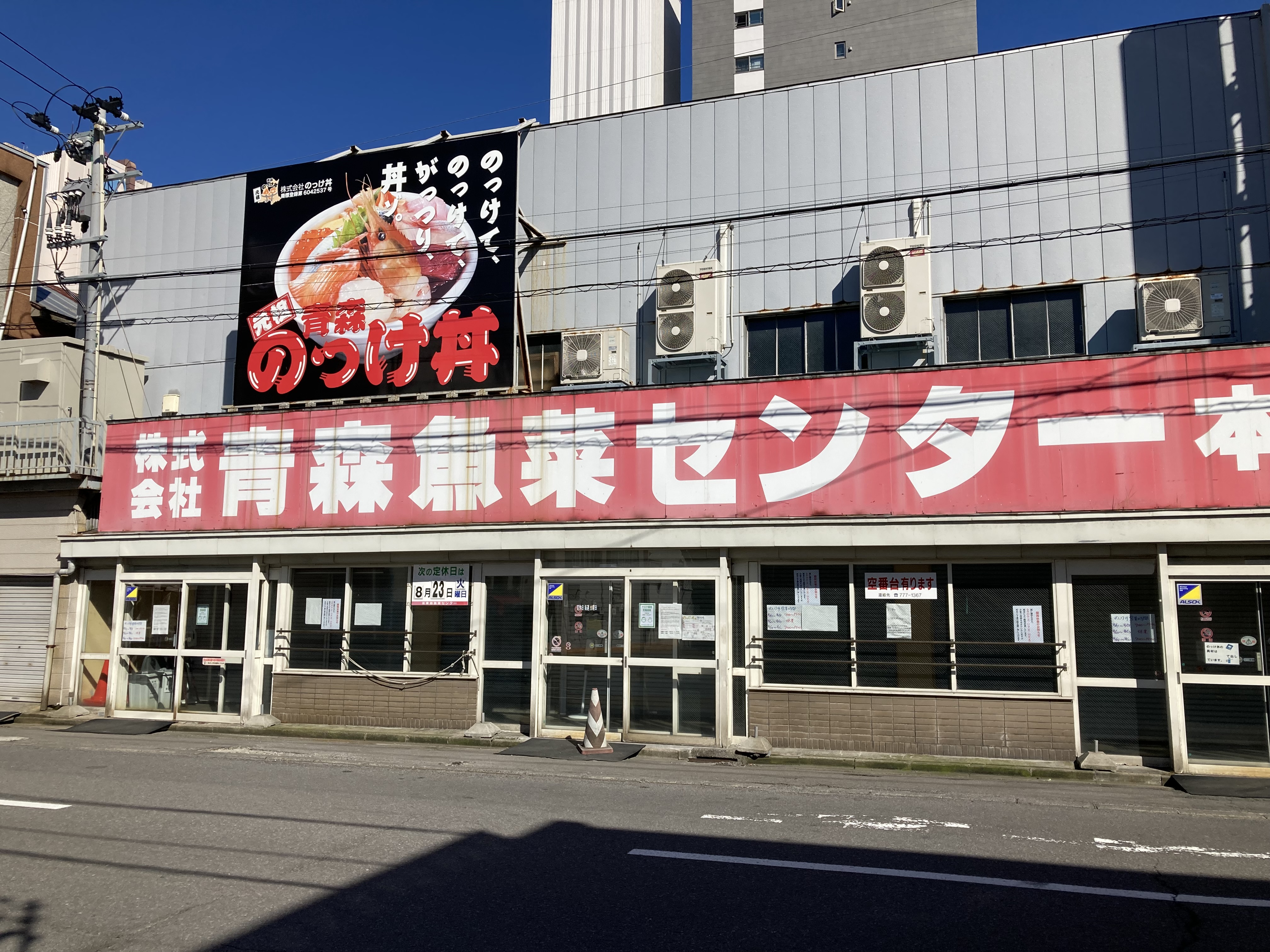
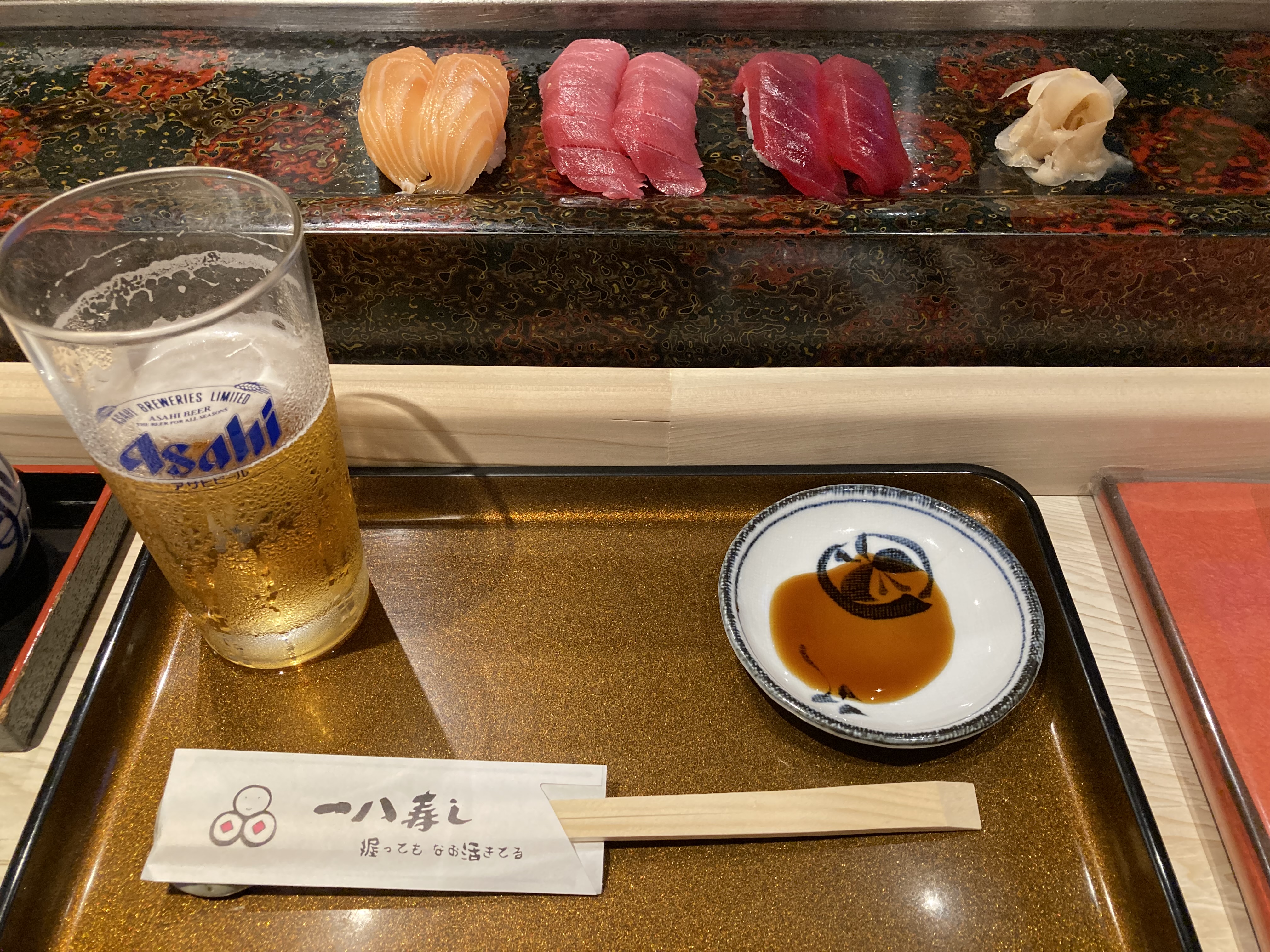
Day 7: Aomori > Kobe
That’s it. After a lazy morning in Aomori, a final dip in the hotel onsen and a short walk around town, I headed to the airport to take the flight back from to Kobe, ending another wonderful trip in beautiful Japan.
